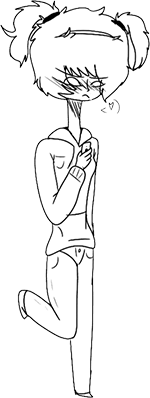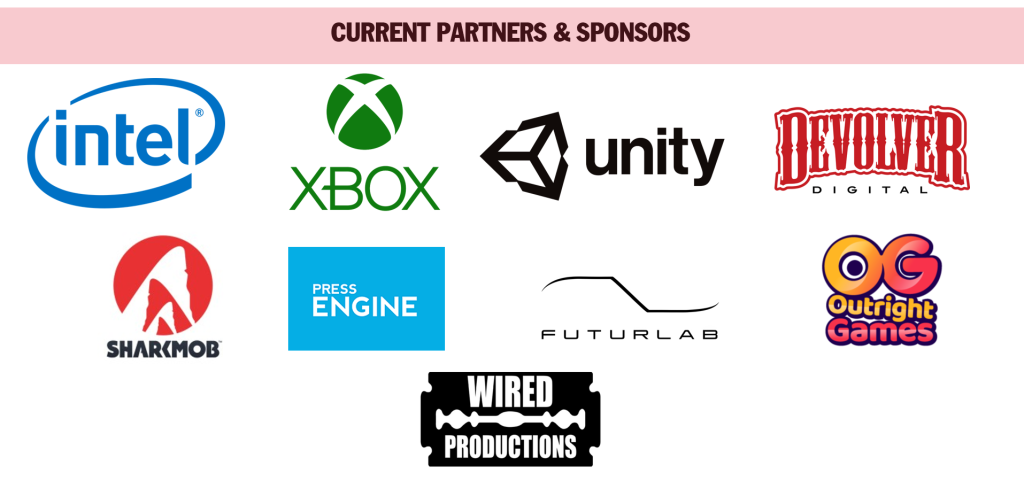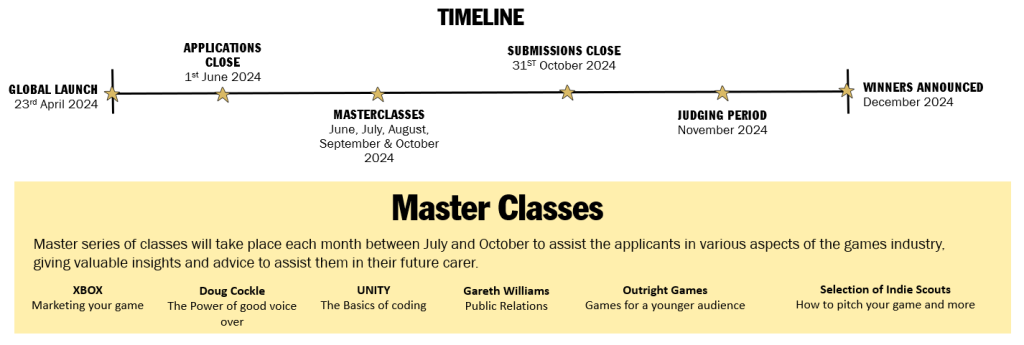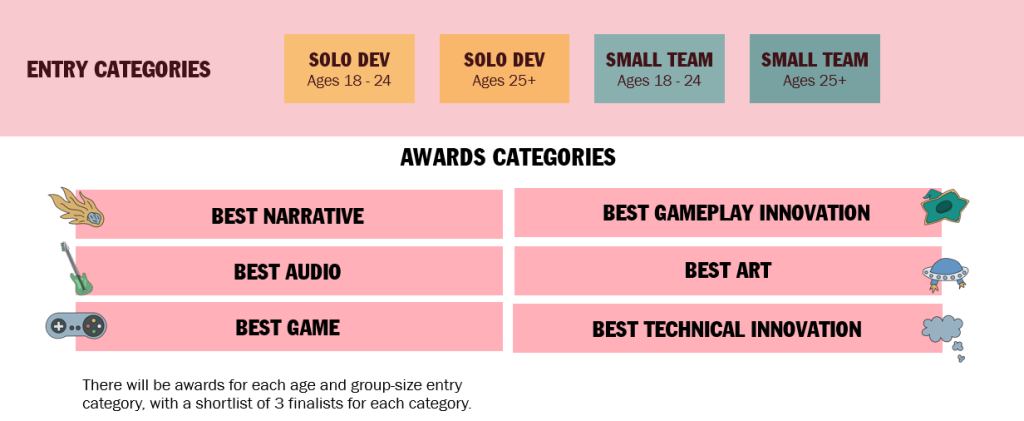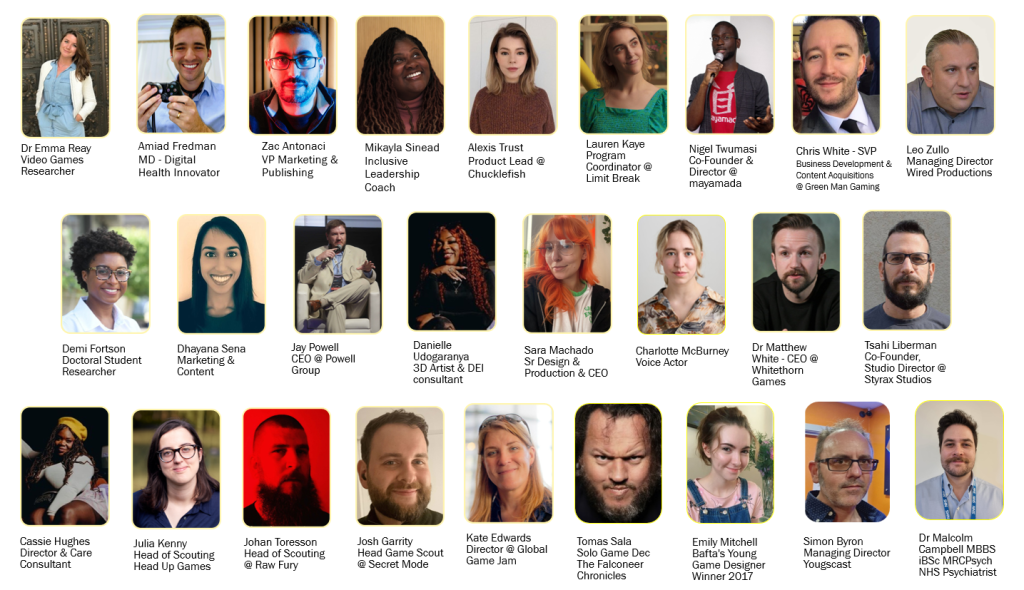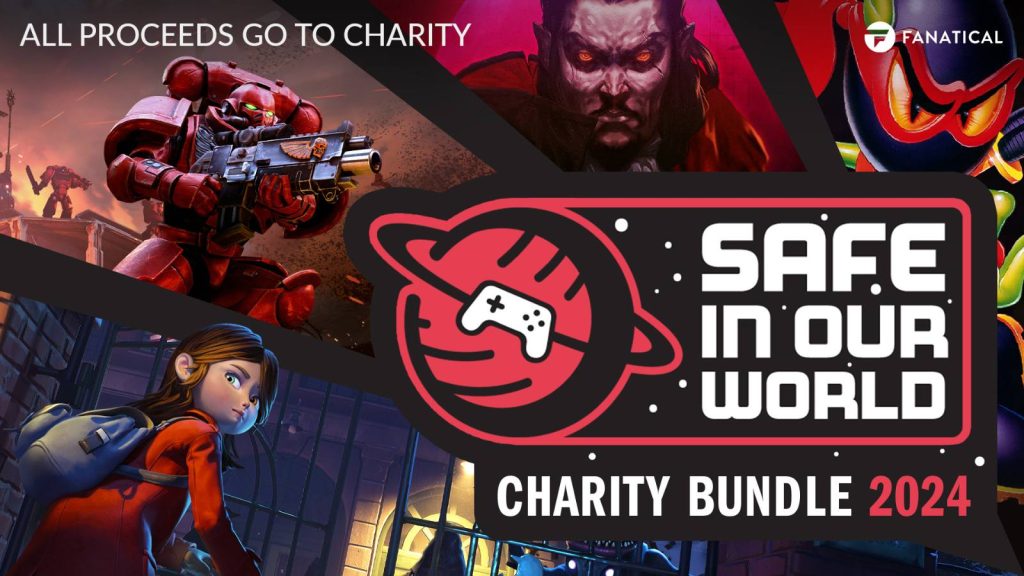Real-world inspirations for mental health horror game ‘Numb’
I grew up in Sassari, a city on the Italian island of Sardinia, renowned for its white sand beaches, crystal-clear waters, and ancient historical sites.
Far from the luxury of exclusive resorts and private villas lies an impoverished neighborhood characterized by dilapidated buildings, decaying infrastructure, prevalent drug abuse, high crime rates, and significant discomfort. I was raised in that district.

Fortunately, I never succumbed to addiction or was dragged into a life of petty crime that could have led me to become one of the many Nobodies and Unknowns who contributed to the neighborhood’s notoriety. Growing up, I observed that arrogance and violence were the primary modes of expression for these individuals, and showing even the slightest sign of weakness almost guaranteed becoming their next victim. This is why most people in the neighborhood never openly discuss their personal issues, especially those not related to material concerns. Any discussion of struggles potentially tied to mental health was dismissed, perceived as trivial compared to the physically tangible challenges of living in such a problematic district. “Just don’t think about it,” they advised.
This mindset was so pervasive that many eventually convinced themselves that any negativity in their lives was merely an exaggeration, and that openly discussing their mental health struggles was nothing more than a narcissistic bid for attention rather than a plea for help. Yet, this misguided perception took a toll on people’s lives: many individuals I knew eventually became consumed by drugs, and some even tragically ended their own lives.
After moving out of that neighborhood and being exposed to diverse realities, I realized that I wanted to be able to talk about my problems and that everyone should have the freedom to do so without the pressure of societal norms imposed on them without their consent. Many years later, this realization inspired Numb – Just Don’t Think About It.
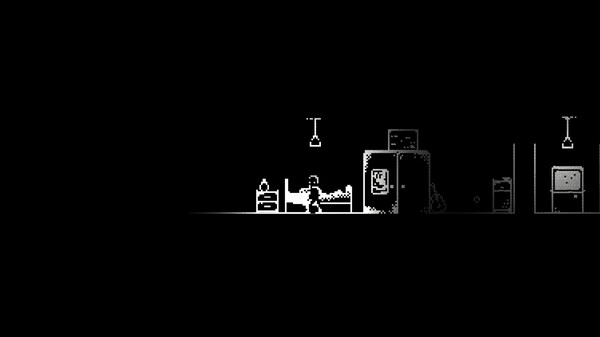
Numb – JDTAI critiques those who trivialize the suffering of others and encourages those struggling to confront their challenges head-on and accept their own limits, all within the guise of a minimalistic survival horror game. The horrors faced in Numb – JDTAI are representations of the mental health struggles of everyday life, particularly for neurodivergent individuals. The graphic setting is minimalistic, employing a “1-bit” pixel art style that allows players to focus on the narrative and specific environmental details.
The game environment draws inspiration from the village of Hogeweyk, a clinic in the Netherlands for Alzheimer’s and dementia patients. Here, patients live a “normal” life, largely unaware of being treated, while under the watch of medical personnel disguised as villagers. The village is segmented into areas based on the type of care required; in Numb – JDTAI, this concept is reimagined as a residential building with color-coded apartments and areas. Color coding plays a crucial role in Numb – JDTAI: each apartment and character is marked by a dominant color that metaphorically signifies a specific mental health condition. By paying attention to environmental details and character dialogue, players can discern which condition is represented by a certain color.
The gameplay is also partially influenced by Hogeweyk: one of the therapy methods applied in the village involves aiding patients in creating daily routines to help focus on significant matters and ward off negative thoughts. With the help of my wife, a behavior analyst, I designed moments within Numb – JDTAI that help the protagonist (and, arguably, the player) to maintain sharp focus—this is why in the game, activities like making the bed, cleaning the dishes, or petting a cat carry equal importance to fighting and surviving against monstrous creatures.
Ultimately, the goal with Numb – JDTAI is for the player to encompass their everyday struggles: feeling useless, empty, unemotional, dull, and scared, yet simultaneously eager to resolve their conflicts, being careful not to infringe on anyone’s space, including their own. After all, everyone cries their own tears.
Written by Walter Cossu, translated by Giorgio Crosali
Skills utilised:
News, Stories
Mental Health Game Dev Champions 2024
The video games mental health charity Safe In Our World is launching Mental Health Game Dev Champions 2024, aimed at empowering gamers and developers to create intimate and personal video games based on real lived experiences.
Game Dev Champions 2024 is a worldwide event, encouraging entries from a variety of ages, skills, and diverse backgrounds. Register interest here to be notified of when submissions go live.
Games are an amazing vehicle to express difficult and often emotional mental health journeys that people face every day. Through this initiative, and by sharing these experiences, Safe In Our World seeks to amplify the voices of the gaming community and enable players to experience an often silent struggle.
Who is Mental Health Game Dev Champions 2024 for?
The Mental Health Game Dev Champions 2024 is a worldwide event, encouraging entries from a variety of ages, skills, and diverse backgrounds. Solo entries are allowed, or team up with friends for a group category. The only restriction is that you are over 18, and you are aspiring developers, not an existing development team.
When and what is happening?
You have until the 1st June to register for the Game Dev Champions. At that point the event officially starts and no further entries will be allowed. The development window is open for 5 months, and at the end of October will close to allow a month for judging. A special live show is planned to announce the winners, in December, hosted by Julia Hardy and Doug Cockle.
Theme for the Game Dev Champions 2024
As we know now, the charity was launched on the eve of a pandemic which was pretty good timing to offer support for gamers. There were many dark days during that time and the true impact will ever be known, BUT if there is one legacy that Covid has left, its that perhaps people are now talking more about their mental health. So, that is the theme of this competition, to continue this vital conversation and we encourage people to express what they went through and how they felt by making a game that means something to them.
The Judges and Hosts
The judging panel will include esteemed industry folk, game developers, indie publishers, and clinicians. This list is non-comprehensive!
During December the Safe In Our World Mental Health Game Dev Championship 2024 Winners will be announced via a Live Stream hosted by the renowned Julia Hardy and Doug Cockle.
The Prizes
The Rules
- All games must be produced within the time frame of the challenge, games made before 1st June are not permitted
- A ‘Small Team’ must be a team of people who do NOT normally work together on projects, and must be a maximum of 6 people.
- The Game Dev challenge is for people just starting their carrier in the games industry, to qualify you must not work within the industry or have only done so for 2 years or less.
- The Safe In Our World standard guidelines on conduct apply to all aspects of the competition
- The Games may be created using any games engine you wish as long as it is accessible to the judges.
- All Games must include the theme in some way, make it special to your journey
- All games must be complete and in a full working order
- You may enter multiple games if you wish, as long as they are all created during the given time.
More comprehensive rules will be updated shortly.
Register interest here
Skills utilised:
News
Safe In Our World and BAFTA To Host Games Mental Health Summit 2024
Following the success of the inaugural Games Mental Health Summit in 2023, video games mental health charity Safe In Our World and arts charity BAFTA are partnering again to host the 2024 Games Mental Health Summit at BAFTA’s London HQ on June 3rd 2024.
The Summit will bring together games industry professionals and mental health clinicians to explore how we can create a safer industry for everyone. This year’s summit will focus specifically on driving change, and will feature a mix of keynotes, panels, workshops, and roundtables. The talks will aim to address various topics and challenges that we face in the games industry including compassionate leadership, burnout, toxicity and harassment, and how to enact change in the workplace.
Speakers will be announced in the lead up to the event on the Safe In Our World and BAFTA social media channels.
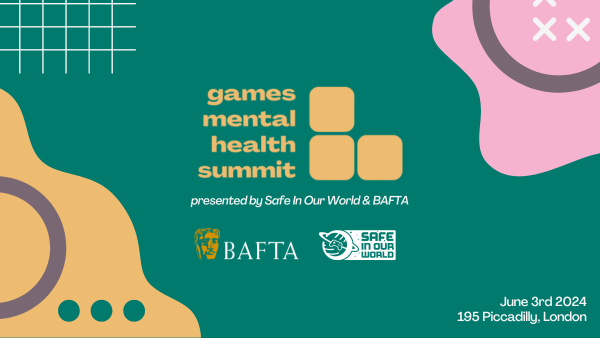
“In a year that has been difficult for many in the industry, the need for positive change on mental health awareness has never been greater,” says Luke Hebblethwaite, Head of Games at BAFTA. “We are proud announce the return of our Games Mental Health Summit, in collaboration with Safe In Our World. With the combined strength and great work of both charities, we want to continue to drive forward conversation and tangible action in our industry on mental health. Whether at a personal or corporate level, there’s still much for us all to learn and there’s never been a better time to get started than now.”
Sarah Sorrell, Charity Director at Safe In Our World, also explains the importance of events like these for the games industry. “Having a focus on how we can drive change within the industry whilst prioritizing mental health is fundamental to fostering a healthier and more sustainable industry in the future. The challenges we’ll be addressing in this summit will allow an open discussion for sharing knowledge and promoting collaboration in the face of adversity.”
To ensure that this knowledge is available to those unable to physically attend the event at 195 Piccadilly, Keynote talks and Panels will be recorded and broadcast on the BAFTA YouTube channel post-event.
The full list of speakers will be announced within the next 2 weeks and tickets can be purchased here for the price of £15.00 / £12.00 concessions.
Skills utilised:
News
Noxia Somnia
Face your fears in this chilling 2D survival horror action game about understanding and overcoming mental health struggles. Explore twisted nightmares, engage in challenging fast-paced combat and survive encounters with terrifying stalker enemies.
We spoke to Jeff Mundee, Director of Design and Development, and Chuck LeBlanc, Counselling Consultant, about the game in more depth.
The Core Themes
“The themes in the game are around anxieties and personal events from the creative director’s experience. It is a personal reflection presented in the context of overcoming relatable fears for people, especially young men. Young men as we were told by our subject matter experts are less likely to seek out counselling and other support,” Jeff explains, “so we wanted to meet those people at a favourite pastime. A game with enough depth and gameplay to be a good title on its own merits, but to also name and demonstrate these common challenges they might be facing. In Noxia Somnia, you start each stage being unable to defeat the boss that represents that fear. By coming to understanding [whilst playing] through that stage, you weaken the fear and can stop running and finally defeat it.”
“This transition from survival horror mode, managing stress, the comforts of light in the darkness, and navigating the maze what being hunted, to then a high-action battle was a very difficult arc of gameplay to balance. The catharsis of standing up to the fear you were running from is worth it every time.”
In the early stages of the game, we see conflicting messages from ‘Overwhelming Anxiety’ vs ‘The Guide’ with dialogue representing anxiety vs a more balanced and hopeful voice. What do you hope this representation of negative self-talk will portray to players?
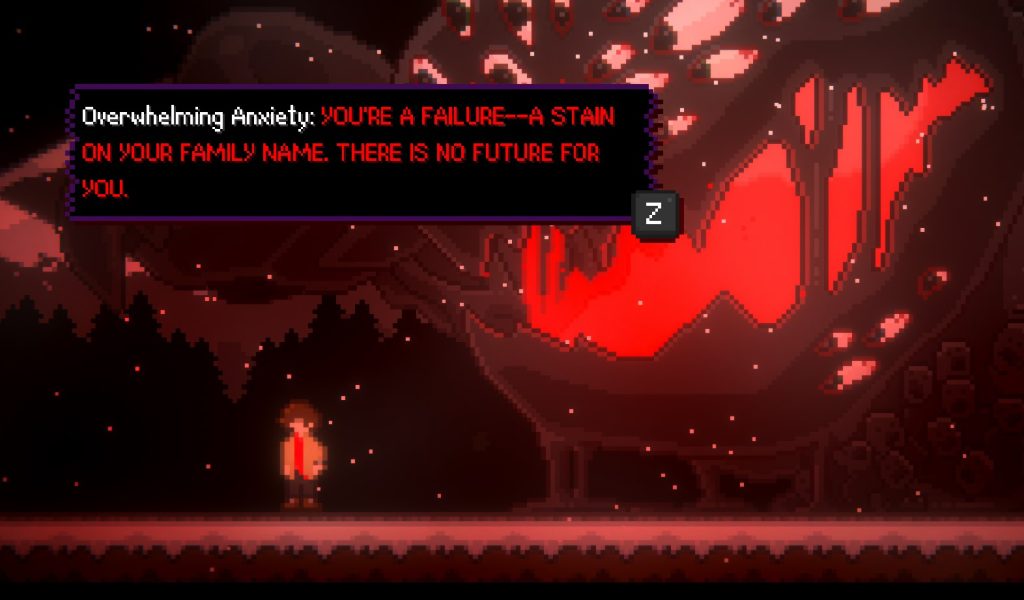
“This piece shows how negative thoughts, fueled by anxiety and self-doubt, can become a big part of how we see ourselves and the world,” Chuck describes. “Such negative “self-talk” can change how we see things and limit what we believe we can do. For example, Tristan in “Noxia Somnia” deals with this kind of self-talk, which makes us think of Wittgenstein’s idea: “The limits of my language are the limits of my world.” This means the stories we tell ourselves really shape our lives. Tristan’s struggle with deep anxiety is a constant stream of negative thoughts that control his life story.”
“Then, a guide comes along, full of hope and balance, offering a new way to see things based on the real events of Tristan’s life. This new and often different story challenges the old one, which is ruled by anxiety. The guide’s positive outlook helps us see what we might miss or ignore because it doesn’t fit with our negative thoughts. By introducing a different viewpoint, the guide shows how changing our internal story can change our negative views about ourselves.”
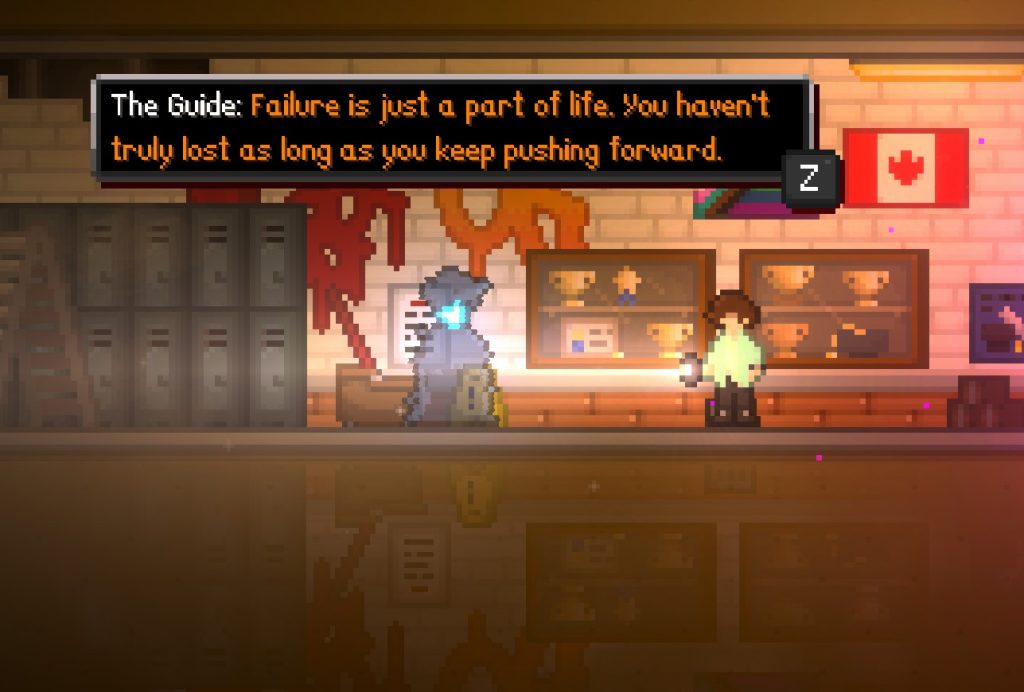
Why choose a horror theme for the game rather than other genres?
“Horror stories match perfectly with the complex issues of anxiety, loss, guilt, grief, and regret,” Chuck explains, “These emotions (which we often try to escape) can linger in our minds and sometimes take over our lives, making us feel isolated and overwhelmed. This is why horror genres frequently explore these themes. For example, “The Babadook” (2014) delves into grief, while “Shepherd” (2021) tackles guilt.”
“Anxiety, which comes from our brain’s limbic system and is tied to the amygdala’s survival responses (like fight, flight, freeze, and fawn), is a common tool in horror movies to raise the stakes and get your heart racing. The suspense and danger in horror stories tap into our primal fears, making us feel as if we’re the ones being chased. This feeling can mimic the feeling that anxiety can produce like impending doom which is helpful when attempting to help the audience feel what its like to have some forms of anxiety.”
What is something you want players who have less understanding of mental ill health to take away from Noxia Somnia?
“I hope that players who might not know much about mental health will connect with deep feelings they have. I want to show them they’re not alone and that many others feel the same way. By engaging with the themes in ‘Noxia Somnia’, I hope players will reach out to friends who are struggling like Tristan and understand the hidden battles people face.”
Skills utilised:
Games & apps, News
The Story Behind Pine Hearts: An Interview with Rob Madden
On Wednesday 27 March, our 2024 Ambassadors Phoebe and Pengy, attended a press event for Hyper Luminal Games’ new title, Pine Hearts.
The pair sat down with Rob Madden, Creative Director at HLG, to discuss the game’s themes of love, loss, life, memories, and family.
The general theme of the game is this journey where Tyke is revisiting his childhood and learning through memories of his father.
“The game was very much inspired by my own personal experiences. I lost my dad very suddenly to cancer in 2019 and that was obviously a very big change in my life, and my family’s life. I’m an only child, so it was just me and my mum having lost my dad. It was quite a big ripple that my family felt at that point in time. There was quite a while where I was just trying to figure out what that means, and how you cope with something like that, and how you deal with something like that.”
“I’ve always loved building things and making stuff. I’m a games developer and I just love making things and being in little worlds and kind of figuring out what they are. I kind of just turned immediately to the thing I knew best, and was comforting I suppose, which is just sitting in front of my computer and making something.”
“So Pine Hearts initially started out as this cute little diorama: it was just a house with a white picket fence and some trees, and it just felt like this really cute, cosy, comfortable little place where I was like “Yeah, I’d like to be there, in that little world, for a bit.” And then, from that, it grew into a little character that runs about the space, and now you have things you can interact with, and different characters you can speak to…it really just came very organically from that, but it was all very much born out of this need to create something that felt safe and cosy.”
“It was all very much born out of this need to create something that felt safe and cosy.”
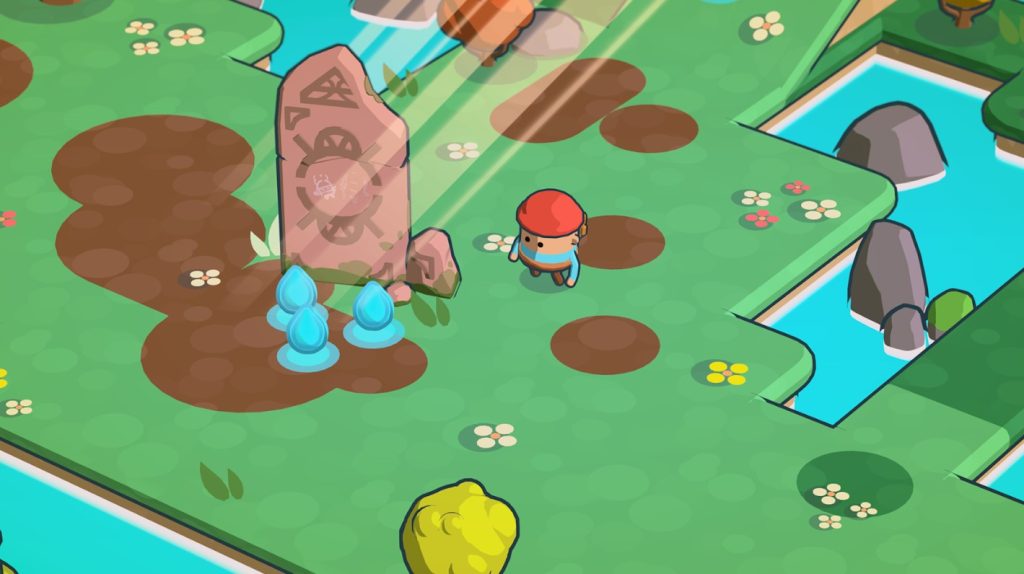
And so when it first started to come together I realised that actually there’s something here where maybe we could use the game as a vehicle to express a very literal story about someone’s experiences – maybe my own experiences. We kind of dabbled with that in the past with certain games where they have a sort of theme or undertone where you could read between the lines a little bit and get a sense of that theme, but we’d never made a game where the story was really quite explicitly about, you know, “this is what happened: this character has lost this person, and is learning how to cope with it.” I felt like it was a really interesting opportunity to do that, and so we just sort of figured out as a team how we could tell that story and how we could make it feel as applicable to a broader range of people as possible, which we thought was really important.
Although it’s my story, it’s not a story that’s unique to me, unfortunately…it was important that, while we were developing it, the team was able to kind of latch onto it and bring their own sense of personal experience to it, and have it relate to them in various ways. If you’ve lost someone else – friends, family, whoever it might be – you can still get a sense of belonging and understanding.
“Although it’s my story, it’s not a story that’s unique to me, unfortunately.”
With the team contributions to the story: was it planned out from the start or did it happen quite organically? What was the process of collaboration?
It was fairly organic – that’s how we like to operate our teams. I like to work in a way where you give people enough space where they can be really talented and clever, and make their own decisions. I provide just enough direction to sort of say “these are the boundaries, so we just need to be really clever within this space.” I think a really important part of that is trusting the team to bring their ‘A game’ and get involved. If you’ve spoken to some of the other members of the team today, hopefully you’ve recognised that they feel like they have a really strong sense of ownership of certain parts of the game. They’ve been able to impart little stories or little things that they’ve dealt with in their lives, and they can kind of put that in the game.
I think that sort of collaboration at the beginning was really important. I think what I’d do differently is that I probably wasn’t as open about the themes of the game initially as I should have been, and that’s been a learning point. We started the game three years ago, and it was still pretty soon, relatively speaking, after [my father’s death] had happened, and I think I was still at a point where I didn’t know if I was confident about talking about it. Sometimes it felt like I’d bitten off more than I could chew; I’d think, “You know, I could get on stage and talk about this,” and then you actually get on stage and you’re like “Oh, no, this is too much.” I think maybe in hindsight I should have been a bit more open with the team about it, and just been more vulnerable I guess. Being like “this is how I’m feeling about it, and this is what I’d like to do.” It’s kind of scary – right? – to do that, even with people you trust.
Do you find that – with the game being so personal to you – it has given you the opportunity to open up a bit more in that way?
Yeah, I think so. I think there’s one thing I can’t quite wrap my head around, but that I really appreciate people doing, is when we take [Pine Hearts] to shows and demo the game, and people ask the team “What’s the game about?” because they get the sense that maybe it’s a bit sadder, and so the team explain the concept…I’ve had people come up to me – complete strangers – who say they spoke to the team about how the game was made, and say “I’ve lost a sister,” or “I’ve lost a mum,” or “I’ve lost someone,” and wanting to just be open about that.
I met a guy at EGX who had lost his dad 8 weeks prior to the event…and he didn’t actually play the game – we were kind of laughing about it, that he should maybe just leave it, and that it might be a bit too much right now. But for someone to just come up to you and be so open like that was quite emotional. I felt very fortunate that people were willing to share that, you know?
It’s obviously something that has a lot of emotion: it’s very powerful and can feel very raw. What are the ways you felt you, and/or the team, have helped to support each other or practice self care? What are the things that have helped you, as a team and as individuals, work with these kinds of very difficult emotions?
First of all, trust is such a big word that we speak about in the studio, irrespective of Pine Hearts. Building games in general is this really complicated and stressful endeavour, where there are lots of competing agendas, or ideas, and timelines, and budgets, and all these different things need to come together. So we talk an awful lot about trust, and building trust with your team, and how you do that, and how you earn trust over time. I think the team for Pine Hearts is really galvanised around this idea in a really lovely way: they’re very talented people, and very trusting people. I think building that as a baseline is important before you do anything. Because then you can be more open if there’s something that you feel isn’t the best, you can approach it in a really productive way. You don’t feel like you’re personalising it in any way, and it becomes a really focused conversation about how you can make the game better.
“I think building [trust] as a baseline is important before you do anything.”
Trust is just so important for the team in everything we do: we really try to get people to talk to one another and just be open, and just be good teammates, I guess.
Do you find that working on such a personal project that’s used not only your own experiences but also the team’s experiences, has brought in that trust and better communication?
Yeah, I certainly think so. We’re already thinking about the team we have now, and how we can deploy them on other stuff together. You don’t want to create this great band, and they have a single, and then they go their separate ways – that would be nonsense. We’re thinking about how this team can work on something cool together, because they’ve really bonded over their experience [of making Pine Hearts.] They’ve gone through the fire of game development with the added twist of something that’s really personal.
One thing I’ve taken from Pine Hearts is that it’s about something very serious, but there’s a lot of levity and joyfulness…When you were starting the project, what was the reasoning to go toward that, rather than something heavier?
It’s interesting. I’d like to speak to more people who have gone through something like this. They say there are all these stages of grief, right? I don’t know whether that’s true – maybe it is for some people – but definitely the stage that I was at, when I wanted to start making the game, I didn’t want to create an experience that – for me or for anyone – would pull me back down that road. It’s like, “I want to keep going this way. Towards recovery.” I didn’t want to make a game where I imagined people playing it and being upset. The game will cause upset in some respects because parts of it are going to be close to home, but I didn’t want people to come away feeling worse from the experience, you know? Feeling like they’d taken a back step or anything like that – that’s just not the sort of game I want to make.
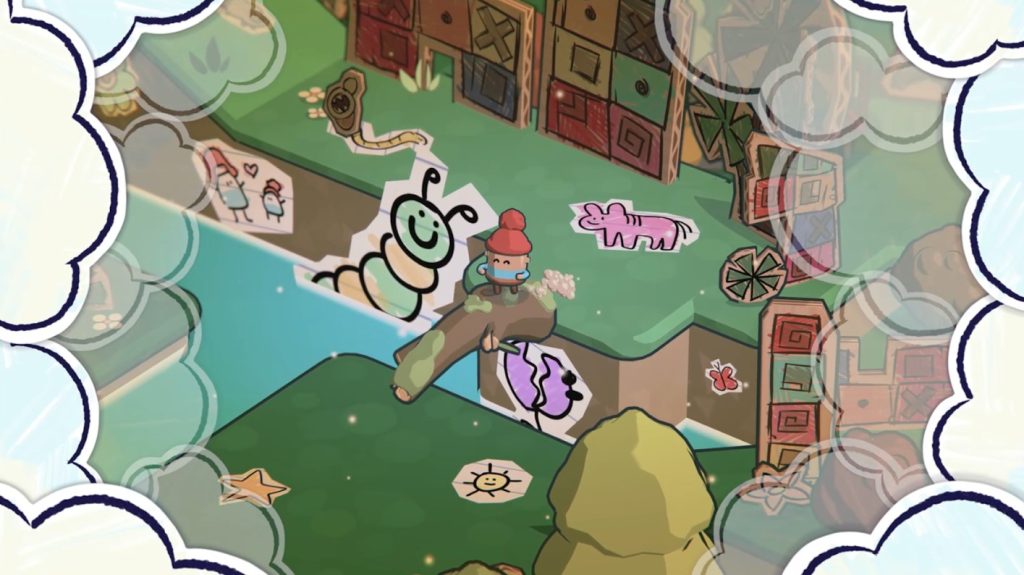
I felt it was important that the game – no matter what it was doing – was still always working towards a hopeful place. And you take little dips every now and then, but ultimately you feel like when you get back, you realise how far you’ve come. I think that was important: to make it feel like you were still moving forward.
I think one of the things you do as well, with grief, is try to look back on those fond memories: the good times, as a celebration of them. From what we’ve seen of the game, it does that very well with these little snapshots.
Yeah, you go back into Tyke’s memories, and it’s meant to be nostalgic, I suppose. Or glad, at least, of all things, that at least you’ve still got all that stuff that you can remember. You might not get any more of those things, but no one can take them away from you.
Are there any key things you hope that people will take away from Pine Hearts?
I think people just taking away an appreciation for the time that you’ve spent with people…it’s kind of a cliché, but you don’t know what you’ve got until it’s gone. But it’s true. You spend so much time worrying about day-to-day stuff, and then something changes – irrevocably, that you can never get back – and you really feel it. You really feel that big gap. I think, if anything, just having people recognise and appreciate some of the things they have, and acknowledging that, and using that in a way that can enrich your life. And if you’re going through something like that, I hope playing the game might help you feel a bit better – even marginally – about the position that they’re in.
Skills utilised:
News
Exploring loss through the Brothers: A Tale of Two Sons Remake
With Brothers: A Tale of Two Sons Remake now out, we wanted to pull together our thoughts on the touching storyline whilst focusing on how games like Brothers can tackle grief and loss through play.
Whilst the original game made its debut in 2013, the Remake (which released in February 2024) acts as a faithful upgrade to the original story. The remake introduces new character models, landscapes and updates to the performance and gameplay, as well as having re-recorded the soundtrack with a live orchestra.
Caution: Spoilers on Brothers: A Tale of Two Sons Remake ahead!
Sky and Rosie were excited to try out the remake, with Rosie revisiting the series after having played the original, and Sky being introduced to the story for the first time. “I had never played Brothers until the remake. It was one of those games that came up in almost every conversation around mental health and video games (which, given my job, was many of them), but I’d just never gotten around to it. I knew of the core mechanics – and I knew one of the brothers was going to die – but I really had no other preconceptions going into it,” Sky explained.

“I played the first half of the game on stream, and spent most of the time laughing about my inability to master the controls, and some of the bizarre ways my brain was attempting to solve the puzzles. I was having fun! Always with the uneasy notion that it wouldn’t last, but I was having fun.
“Each new area I discovered felt distinct, with new colours and new creatures, and I made sure to sit on each bench to gaze out over new landscapes. I ended the stream on a low – as I meant to continue, I suppose – having rescued a small griffon-like creature which then succumbed to its injuries. The whimsical, joyful moments of the game were becoming more frequently interspersed with unsettling and mournful imagery.
“I continued the game some days later on a voice call with Rosie, and was immediately re-immersed and emotionally invested. I just knew something was up with that girl we rescued. Why was she alone? Why was she leading us through villages whose inhabitants were long dead? How was she jumping like that? I felt very connected to the little brother who shared my incredulity, and frustration at the big brother for not acknowledging these concerns.
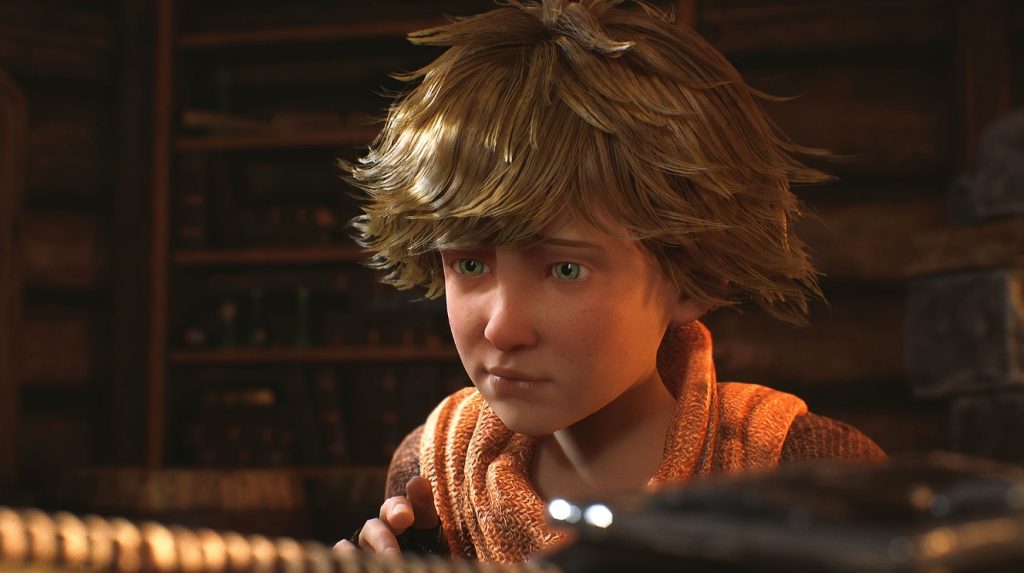
“I knew the “twist,” so I knew what was coming, but I still hoped it wouldn’t. When the big brother was injured, I knew there was nothing I could do to save him, but I dutifully went where the game wanted me to go, and dutifully felt sad when I, as the little brother, raced back to my big brother only to find him dead. I imagine my knowledge of the game had dulled the emotional weight of this moment somewhat – rather than a surprise, it was a miserable acceptance of the inevitable.
“What I hadn’t prepared myself for, however, was the emotional gut-punch that came straight after: wherein the momentum of the game came to a screeching halt as I dragged the body of my older brother, excruciatingly slowly, into a grave. I sat in silence, listening to the sobs and gasps of the little brother, covering the body one pile of dirt at a time. Having to sit in that feeling – being unable to escape from it – was heartbreaking.
The game goes on to force you to feel the loss that the little brother feels: as I came upon a river, I said out loud “but I can’t swim.” And it doesn’t pull any punches, leaving you with the devastating scene of a now healed father mourning the loss of his eldest son, as his youngest attempts to comfort him.
“I deeply admire the storytelling in Brothers, not in the least because there is no actual dialogue in the game. The use of tone, sound design, colour, and pacing really engaged me in a way that not many games have done before. As a means of simulating grief, the burial scene was impeccable: the switch from fast-paced music to stony silence; the gut-wrenching sounds of the little brother crying; and the way the entire game comes almost to a standstill. Even though the ending wasn’t a surprise, I was surprised by how connected it made me feel, and it is certainly an experience that will stay with me.”
Previously, Safe In Our World Trustee Emma Reay has discussed in detail the impact of the unique hand movements and gestures associated with Brothers and how they integrate with loss. You can read that article here.
Skills utilised:
News
‘Gamifying Wellbeing’: Designing Therapeutic Videogames to Treat Mental Illness
My phone buzzes, making the whole table vibrate. I flip it over apologetically, so that the screen is hidden. This gesture is partly to reassure my colleague that he has my full attention, and partly to conceal the fact that slotted between the usual email notifications and calendar reminders are messages from a cute, cartoon bird called ‘Twaddles’ asking me how I’m doing today.
In fact, if I were to scroll through all the alerts I’ve received in the last 24 hours, you’d see multiple prompts from a smiley cloud inviting me to take some deep breaths, hourly check-ins from an anthropomorphic cactus suggesting that I log my mood, and announcements from The Forest letting me know that I have unspent Productivity Gems that I can exchange for Seeds of Calm*.
My phone has become a helicopter parent. It is constantly hovering in my periphery, chiming in with unsolicited advice, cautioning me against potential harms, and gently reproaching me for not taking better care of myself. It is a problem of my own creation – I installed all of these apps because I’m working on a research project about games and mental health. Along with my collaborators – the ethicist Dr. Gabi Pavarini and the clinical psychologist Dr. Lindsay Smith – I’m putting together an extensive review of the academic literature written about the ethical implications of using digital games as therapeutic interventions, and so I wanted to get a first-hand look at what is currently available in the rapidly expanding ‘digital mental wellness market’.

I know from my own experience and from listening to the experiences of other gamers that video games can be fantastic tools for mood repair, stress relief, and anxiety management. During the height of the Covid-19 lockdowns, we saw more and more people turn to digital games to meet their basic psychological needs. Like all coping strategies – from drugs to exercise – the misuse of (or overdependence on) video games can be detrimental to our mental wellbeing. But after decades of negative discourse around gaming and mental health, researchers are now trying to harness the restorative power of video games to optimise mental wellbeing.
And…the results are mixed. While there are some studies that explore the positive effects of commercial-off-the-shelfs (COTS) games on our emotional health, most researchers focus on custom-made games designed to deliver clinically proven interventions, such as cognitive behavioural therapy (CBT) or guided breathing exercises. My general sense is that although these purpose-built apps have all the trappings of digital games – they have collectibles and score boards and win streaks and customisable avatars and hot spots to tap – they just aren’t very playful. A microwave is digital and interactive. An ATM machine is digital and interactive. What I’m saying is, buttons and a screen and beep-boop noises doth not a game make…
The lack of playfulness in these so-called games is disappointing – not least because many adults are starved of opportunities for play. Analogue forms of play (especially role-play and other kinds of imaginative play) have long been used by therapists to help clients process difficult experiences, gain self-knowledge, and experiment with alternate ways of being. But when perusing the digital mental health market, I found that while Points, Badges, and Leader Boards abounded, imaginative play was notably absent.
What worries me most about Twaddles the bird, the smiley cloud, and the anthropomorphic cactus is that the gamification strategies they use to ensure adherence to self-care activities are disturbingly similar to the techniques employed by the worst kinds of extractive, pay-to-play mobile games. These exploitative games rely on Skinner-box mechanics to coerce players into spending more money (or more time) whilst playing than they would otherwise. Is it ok to use these same manipulative devices (such as scheduled rewards, ‘streaks’, a glut of notifications, and so on) in the service of encouraging healthier habits? Do the wholesome ends justify the dubious means?
When I’m feeling particularly cynical, I’m tempted to accuse some of these mental health apps of ‘wellness washing’. Just like green-washing (using ideas about sustainability to sell stuff) and pink-washing (using the language of LGBTQ+ inclusivity to sell stuff), ‘wellness washing’ uses the rhetoric of self-care to sell stuff. Does buying Twaddles a new beanie hat in the in-game store really improve my mental state? Does spending rainbow tokens to speed up my cacti growth send the right message about stress management? Even when we’re not talking about using a real currency, these kinds of motivation systems follow the same consumeristic logic that implies we can buy our way to better mental health.

The review I’m writing with Gabi and Lindsay is about the ethics of using video games in therapeutic settings. We’re not just interested in the question ‘does it work?’ – which is, of course, very important – but also in the bigger questions, like ‘what are the societal, political, and economic implications of gamifying mental health?’ So far, we’ve found that many studies enthusiastically emphasise how cheap, accessible, appealing, discreet, and convenient video game interventions are, without really pausing to reflect on why vital mental health services in the UK have become so dangerously underfunded, inaccessible, intimidating, stigmatised, and inconvenient.
We are living through a mental health epidemic. In this context, mindfulness apps feel like a techno-utopian sticking-plaster approach to a much deeper, more complicated problem. By that I mean, valuing an intervention because it is ‘cheap, discreet, and convenient’ implicitly endorses the same individualistic, neo-liberal, capitalistic value system that causes many of us to feel so overwhelmed, disconnected, and isolated in the first place. Stress, loneliness, and unhappiness should not be pathologized, individualised, and privatised: they are systemic problems and require systemic solutions. What would a mental health app look like if instead of trying to treat and manage an individual’s symptoms, it attempted to address the systemic causes of mental illness? As rules-based media, games are amazing at simulating systems – wouldn’t this be a perfect use of their unique affordances?
As I scroll back through my notifications, trying to distinguish between the ‘important’ alerts and spam, I think about how radical it would have been if Twaddles had genuinely invited me to play. And I mean invited me to be truly playful, in that subversive, expressive, unruly, goofy, uninhibited, spontaneous, surprising, experimental, imaginative sense of the word. I believe that video games have therapeutic potential, for the same reason that I believe that poems and paintings and dance and films have therapeutic potential: they can make us feel seen, they can show us new perspectives, they can bring us joy, offer us catharsis, and give us hope that there is some meaning in our suffering after all. But unlike these other media, games are first and foremost structures for play. And play is so much more than competition, mastery, and the zero-sum logic of winning or losing that is implicit in the classic Points, Badges, and Leader Boards design schema. Play can take us back to a child-like state of multiplicity – the magical, liminal realm of ‘what if?’ – reminding us that other worlds and other systems and other selves are possible.
*Details slightly tweaked so that I’m not sued by any mental health app!
Written by Emma Reay, Trustee at Safe In Our World
Skills utilised:
News
Failure-Free Games and Switching Off
Playing games that challenge us and reward us for achievements are fantastic paths to escapism. They can allow us to put aside our troubles for a moment and focus on a vibrant alternate reality. But how can games that don’t feature failure and are free of consequence affect our mindset?
What is a failure-free game? For this context, we’re describing failure-free games as games you don’t win or lose at – you just play. A fantastic recent example of this is ‘SUMMERHOUSE‘, a tiny building game focused around creating lived-in houses. There are no rules, time limits, or end goals; just creativity in a casual city-builder.
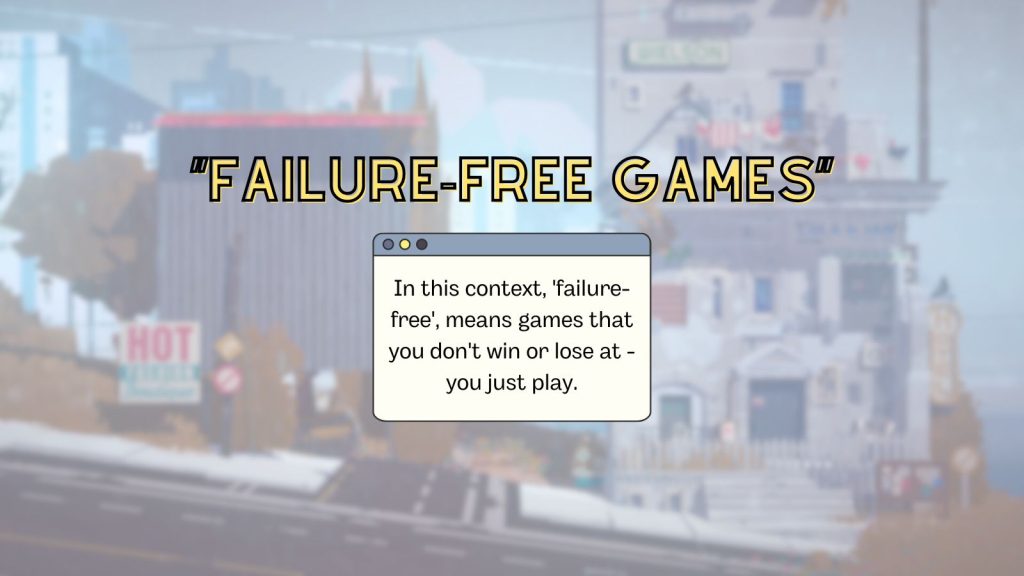
Whilst spending some time with SUMMERHOUSE on my lunch break, it got me thinking about our relationship with games that you tend to just ‘exist’ in. These games that don’t elicit competition, but are often used to inspire new ways of play. I’ve discovered two things recently in a world of seemingly constant bad news: I find peace playing games that don’t really require me to think, and I find peace playing games that don’t make me feel like I’ve failed.
This month at Safe In Our World we’ve focused on looking into rejection and failure, so it seems fitting to discuss how failure in-game can change our mood. If I recognise I’m in a bad mood and decide I want to play games, I often opt for titles that don’t punish me or make me feel like I’ve failed. Consistently seeing the words ‘you’ve failed’ or ‘you’ve died’ can be enough to exacerbate my bad mood.
Failure Free Games
We asked our community what titles they consider to be ‘failure-free’ as well as how they’ve made them feel. A similar game to SUMMERHOUSE, called Townscaper, was a popular choice! Stephen Hey from Radical Forge colourfully describes it as a beautiful ‘waste of time’, mentioning that they own it on every platform it’s available for. “I don’t think there is enough of this type of game. They hark back to the 90’s where we had ‘desktop toys’ – little widgets that let you destroy your Windows desktop. But this game is so elegant and beautiful, I love it.”

“For me, Townscaper is very therapeutic. There’s no pressure, no judgement, and these fantastical and lovingly detailed towns just spring out of nowhere.” – Stephen Hey
“You can get lost in a game like this for a few minutes, an hour, or two. They don’t take-over your life, I don’t feel like I have to be playing it all of the time like you do with some more conventional games sometimes. There is less of an obligation but more of a desire just to play to while away some time. Yet at the same time you feel creative, satisfied and even proud of what you have achieved.” Stephen elaborates.
Matt, from Land and Sea Games, explains his perspective: “I worked on Townscaper, a beautiful townbuilding “toy”. There was no main goal, no scoring or reward system, outside the satisfying sounds and creativity that came from placing down little blocks and buildings.”
Matt also worked on Alto’s Adventure, which whilst not a failure-free game itself, has ‘Zen Mode’.
“Zen Mode [is] where game-overs are disabled, and players can keep playing and exploring the game without worrying about having to master the mechanics and scoring. We’ve had tons of players reach out and comment on using this mode for meditation, to explore the terrain and environments peacefully and to wind down at the end of a day,” he explains.
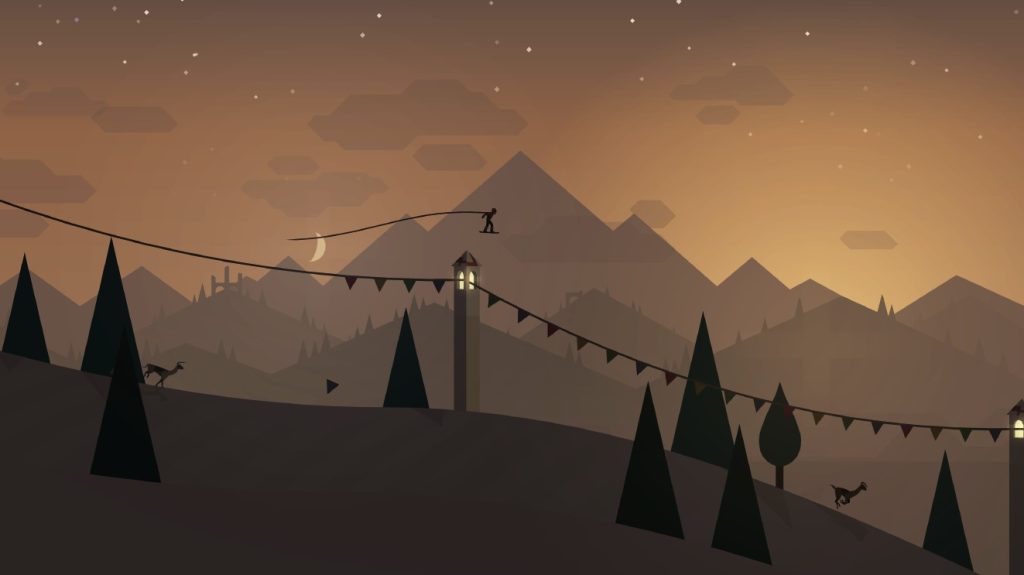
Matt continues, “Both these titles bring a calm, entertaining approach to games that steps away from the high-intensity dopamine mining games we see flooding feeds, and instead lets you just enjoy an environment and system for what it is.”
Other examples given by our contributors included Power Wash Simulator, as players can manage the tasks at their own pace with no consequences, and Palia for its gameplay allowing players to explore all the available content without missing out. JaneDash discusses this: “the team has previously made note that they allow you to romance all the characters because they didn’t want to limit you to only getting to know one villager that way (which also allows those that love lore to explore those parts too).”
Playing Styles
I also wanted to explore how failure-free games make our community feel when playing them.
“Failure-free games give me a mental reprieve from the scope of my day-job. The type of work I do, its success is measured by client satisfaction, and in my personal projects I can have a tendency to put too much pressure on being perfect.” Emily shares, “Gaming in a manner where you are not measured by your success rate is a welcome break for my anxiety and stress levels, and it’s refreshing to just be.”
Melody Geiger from Merge Conflict explained how they personally enjoy failure-free games but don’t play them too often. “I prefer games with challenge usually (but nothing rage inducing). I want to feel engaged and rewarded for completing a quest or a difficult task you know? That being said, I think there’s absolutely a space for failure-free or chill games!” Melody also shares how they intentionally designed their game Re:Fresh to have little to no consequences, allowing players to explore this cozy adventure with more freedom.
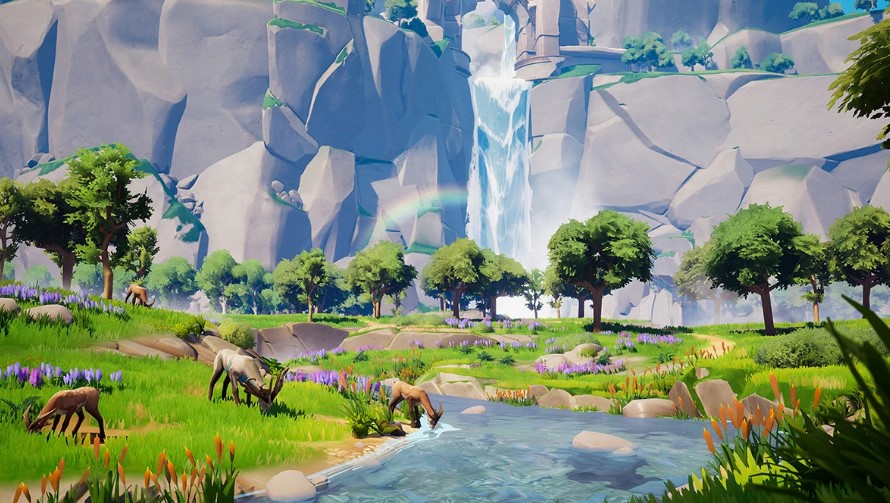
‘Palia’ – from https://palia.com
It’s interesting to also see how failure-free games have enabled some people in our community to have a space in which they can just switch off. Matt talks about this notion, too: “We’re surrounded by so many pieces of media that always fight for our attention, to give us sparks of excitement or engagement to keep us scrolling or clicking, and games do this to some degree, but with failure-free games there is often a sense of quiet that is rare. It’s like curling up with a good book, your mind is put at ease and you feel like you can let things slow down for once.”
“Failure free games are a way for people to regulate any polarizing emotions they might have and give the player space to just breathe. They’re games you don’t have to think to hard about which is nice when so much of the rest of the world can be so noisy.” – Melody
JaneDash brings up that we are still seeing some folks not considering these types of games as ‘real games’, but games like Harvest Moon and Animal Crossing are continuously proving how popular these games are. “Allowing gamers to simply enjoy their time without any stress has also allowed us to play more together, to introduce a new (and old!) generation of players to be introduced into the world of gaming.”
Personally, I love the idea that new styles of play within video games can inspire a new group of players to join in the fun, and experience all the good that gaming has to offer. Perhaps failure-free games can be a great start in exploring or rediscovering a new genre for everyone.
Written by Rosie Taylor
Skills utilised:
News
The Lab42 Neurodiversity Network
Looking into Lab42’s internal network that’s bringing neurodiversity support into greater focus for Neurodiversity Celebration Week.
Spokesperson: Cindy Archer (She/Her) – Office Administrator at Lab42.
The 2022 Ukie UK Games Industry Census revealed that 18% of (or one in five) people working within the UK games industry are neurodivergent – which is between three and four times the rate in other employment sectors. Despite the significant percentage of neurodiverse folks working in the games industry, there has been very little research into why this correlation is so strong, and insufficient support and resource for employers and employees to best support their neurodiverse teams.
With such a high percentage of neurodiverse brains working in our industry, Sumo Group studios have been looking at the ways it can best support its teams – including Leamington-based Lab42. Since it was founded in 2015, Lab42 has successfully delivered a wide range of game all without compromising its studio culture or the wellbeing of its team.
Working on such a mix of projects at any time means Lab42 is staffed by a diverse mix of humans and, in 2023, the studio launched its internal Neurodiversity Network to provide support and resource for its neurodiverse team members.
Here, studio neurodiversity champion and Office Administrator Cindy Archer shares a peek behind the curtain of the Neurodiversity Network and offers practical advice on how studios can better support their neurodiverse teams.
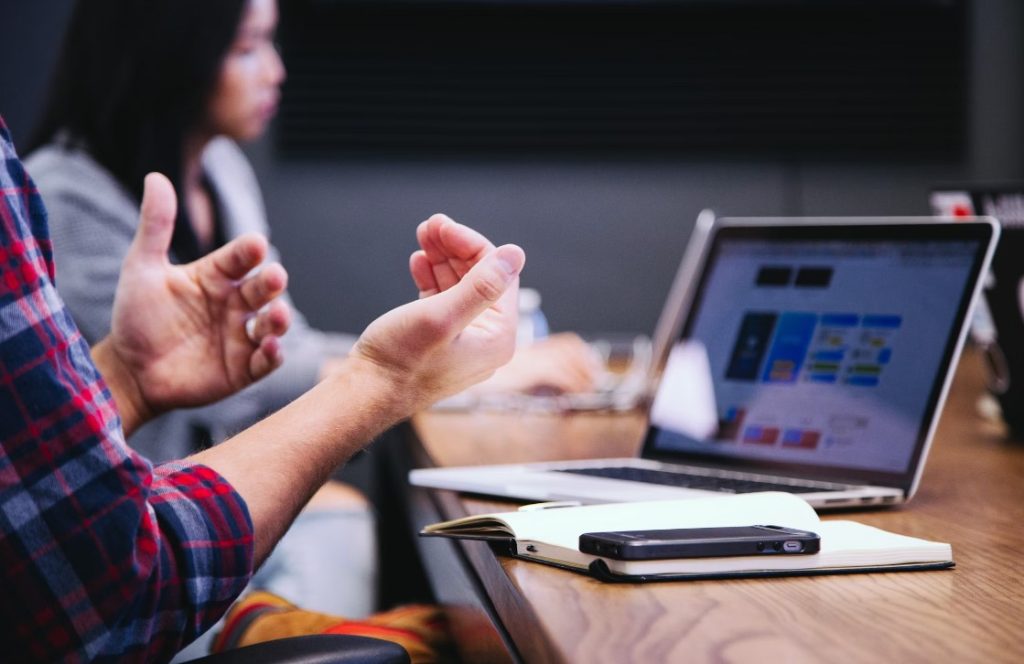
What is the Lab42 Neurodiversity Network?
When I joined Lab42 in October 2022 I was immediately struck by a studio culture of openness, caring and empathy. Prior to joining, I had worked in a variety of industries including public sector work and have never before felt comfortable enough to disclose my neurodivergence and ‘unmask’ in the workplace. I didn’t even give it a second thought at Lab and now, as the studio’s Neurodiversity Champion, I have time dedicated to helping all our neurodivergent team feel valued and supported.
Lab42 is a studio at the forefront of neurodiversity support, with our Studio Operations & Engagement Manager Kirsty Kirby being a strong advocate for neurodiversity support in the industry (having been named a GI.Biz Game Changer and shortlisted for the Diversity Star award at Develop: Brighton last year) and through our support of Ukie’s #RaiseTheGame pledge which aspires to create a diverse workforce and shape inclusive places to work. With so much great work happening already, I wanted to look internally and create a group where neurodivergent members of our team could share their experiences, ask questions and support each other… and so, the ‘Lab42 Neurodiversity Network’ was born!
To get started, we ran an internal survey for our 70+ team, which told us that around 40% of the participants identified as, or thought they might be, neurodivergent. This increased percentage on the national average inspired us to investigate further and we found that many of the participants identifying as neurodivergent did not have a diagnosis. With this in mind, we set out to make the Lab42 Neurodiversity Network somewhere that welcomed everyone – diagnosis or not – to bring their experience to the table and access the support they need. This could be anything from day-to-day advice and mental health support to helping in the pursuit of a diagnosis if that is something they want.

Since launching in February 2023, the network has been going from strength to strength. We’re growing in numbers and each of our monthly meetings are a safe space for people to talk and share, and we have been delighted to welcome guest speakers to give insight into their experience and share tips and resources.
For our people, it’s a great way for them to experience commonality of experience, to help and guide each other through the diagnostic process and to host honest conversations. In addition, it’s a good opportunity for them to share with me how they’d like to see support for neurodiversity improve within the studio and what adjustments Lab42 could make to enable them to deliver their best work. I can then share this with Studio Management, and we can all work together to create an inclusive, productive and happy studio.
Neurodiversity can be a mountain to climb alone, and I’m so proud we’re able to create a safe space where people feel comfortable enough to be their authentic selves.
How to support your neurodiverse teams
When supporting neurodivergent people at work it’s not rocket science… it’s just three simple principles: flexibility, communication and compassion. If you already strive to foster a workplace culture of openness and empathy, then you already have fertile ground to create a group like this in your own studio.
Here are some suggestions for making your studio a neurodivergent friendly space:
Flexible Hours
It’s good practice to introduce flexible working hours wherever possible. For me, as a person with ADHD, I find that I am much more able to focus if I have the flexibility to get up and move my body, which means I much prefer to take bitesize chunks of time throughout my day rather than an hour-long lunch time. At Lab42 we have core hours between 10am and 4pm, but I find having that bit of flexibility in the morning incredibly helpful on days when I am finding it difficult to get going due to executive dysfunction. Perhaps you have someone in your team who really switches on 2pm? Or struggles with function first thing in a morning? Try to find the balance within your teams and come up with a system that works for everybody.
Flexible working spaces
Some neurodivergences can cause a sensitivity to physical environment. Things like lighting (too dim or too bright), noise levels and foot traffic can have a detrimental effect on some peoples’ ability to feel comfortable and focus. Opening lines of communication for your people to share what works for them will really benefit you and your team members, and going into these conversations with an open-mind and a people-first approach will set you up for success.
Provide space for conversation
It sounds obvious, but having open and honest lines of communication with your team is essential when it comes to supporting neurodiverse people. As the survey we conducted showed, many of us are coming to the realisation we have been living with neurodiversity much later in life and this may make initiating a conversation with a line manager about seemingly ‘new’ needs difficult. Where possible, integrate neurodiversity awareness into staff training and make it a conversation for anyone to join in on at any time. We will never call out neurodiversity without consent from the person first, what we ideally want is a workplace culture where there is no stigma attached to neurodiversity and there is a level of trust where team members feel comfortable in disclosing and asking for support.
Everyone is different
No two brains are the same, and that goes for neurodivergent brains too. Listening to the needs of the individual and not taking a ‘cookie cutter’ approach to support strategies is important. We have all grown up in a world that was designed for the ‘neurotypical’ – from the strict routines and learning techniques of school, to adulting your way through life. I believe that allowing someone to work in a way that makes sense to them will be beneficial to everyone.
Educate yourself
There are no end of neurodiversity education resources out there, and a key characteristic of an effective manager is to be able to have informed and open conversations with all their reports. Chances are you will have some neurodiversity in your team, and even if this is undisclosed, expanding your knowledge will help you to bring out the best in all your team members. Some useful resources around neurodiversity include:
- SIC- Experts in disability and neurodiversity in the workplace (sicofficial.co.uk)
- The Brain Charity- Home – The Brain Charity
- Neurodiversity 101 – LinkedIn
- Safe in Our World- Mental Health Charity for Gamers
What’s next for the Lab42 Neurodiversity Network?
I’m delighted to say that our first year of the Lab42 Neurodiversity Network has been a huge success, and we’re now working in collaboration with fellow Sumo studio, Sumo Nottingham, to grow the network and expand the conversation.
My hope for the network is that it continues to grow and that we keep improving, educating and supporting our people however and whenever they need us. There’s still stigma around neurodiversity, and – depending on age, gender and culture – feeling ‘different’ can come with a sense of shame. As we grow the network, I hope more people will come to embrace the things that make them different and feel empowered to bring their authentic selves to work.
We have some exciting plans to further collaborate with Sumo Nottingham throughout 2024 and are looking to host a panel session all about supporting neurodiverse teams and encouraging open conversations.
Running the Neurodiversity Network has been an incredible experience so far. In my role, I really enjoy getting to know everyone at Lab42. I am a mental health first aider and want everyone to feel cared for and supported, the Neurodiversity Network is helping me to understand what kind of issues are specific to neurodivergent people and enabling me to help everyone to achieve their best.
Skills utilised:
News
Event Safety Standards
We’ve teamed up with Take This to create the Event Safety Standards Guide, which aims to provide concrete guidance to people in the game industry on how events can be created in a safer, more inclusive manner.
This includes looking at the planning, policies, and culture of your event, as well as what tools are made available, providing event organizers with a range of resources they can use to make their event safer and more approachable for all members of the games industry.
The guide also includes guidance for event and conference attendees and supervisors on how to employ safety tools and supports, including accessing safe, local supports.
We have created this guide in response to the continued, pervasive concerns about harassment, safety, and accessibility at game industry events across the globe. As part of the effort, we have consulted with members of the industry and other advocacy groups in games. We are grateful to all of them for their thoughtful review.
Content warning: This document discusses a variety of topics which may be distressing to some. This includes discussions of alcohol use, harassment, and sexual assaults.
Read the full Event Safety Standards Guide here.
Looking for support? You can check out our global list of helplines and support.
Skills utilised:
News
Let’s Talk Accessibility In Games with Sumo Group
From action-packed racers to narrative-driven adventures, studios across Sumo Group are striving to make gameplay as fun and accessible as possible – with the aim that more people can enjoy some of the best video game titles out there.
We spoke to four people from across Sumo Group’s studios about the importance of accessibility in games and share their top tips on how to implement it.
WHY IS GAMES ACCESSIBILITY SO IMPORTANT TO PLAYERS?
Sumo Sheffield’s Associate Design Director Joe Kinglake has over 12 years of game development experience – having worked on Killzone: Mercenary, HITMAN 2, and Star Citizen, as well as indie puzzle titles. They are currently working on an unannounced game from Sumo Sheffield and recently hosted an internal talk as part of SDCXtra (Sumo’s bite sized learning programme) about accessibility.
“Accessibility is about eliminating obstacles and ensuring equal opportunities for individuals with diverse abilities and needs,” Joe said. “Accessibility is the very definition of democratisation of making video games playable by all. Right now, there are unintentional barriers that we, as an industry, are creating and putting up that prevent everyone from enjoying the experiences we play.
“The phrase ‘Games are for everyone’ sometimes seems like a throwaway statement if not acted upon,” said Ladell Smith, Social & Community Manager at Auroch Digital – who is also a Safe In Our World Ambassador, WiG ambassador and one of Sumo’s Diversity Champions. “
We know that the world is full of diverse gamers and therefore why are we not trying to lower some of the barriers for them so they can still enjoy games?
“There is always learning and more to be done with accessibility and the more highlight it gets, the more improvements we will achieve. The less gatekeeping people will do and also people can feel more comfortable voicing their opinions on what their needs are with more mainstream media bringing up accessibility.
James Schall, Vice President of Publishing Strategy at Secret Mode, added: “We have to embrace the world of gamers as well as people who want to enjoy games, but can’t. That is not just thinking about the same demographics that we used to look at, but also age, neurodiversity, physical ability, vision impairment or audio impairment.
“If we can reach and delight players across these wide groups, we have more potential to succeed.”
WHAT CAN BE DONE TO MAKE GAMES MORE ACCESSIBLE?
“In a recent talk at Sumo, I covered misassumption topics such as ‘Disabled players don’t play games’, ‘This game is too competitive for accessibility to be fair’, and ‘Accessible games are implicitly imbalanced and unfair’,” says Joe. “I believe that perpetuating these misassumptions is a sure-fire way to build an inaccessible game, so my goal was to challenge the misassumptions to show that disabled players do want to, and are already playing multiplayer games but that multiplayer games are putting up barriers for players at a greater rate and underserving players. The conclusion of the talk spoke about tools we can use as developers to tackle accessibility in multiplayer titles, without harming the fairness & vision of your game.
“In summary, it was a talk about how to identify the unnecessary points of inaccessibility through the lens of your vision, core fun and primary challenge of your game. Overall, it’s important to understand that accessibility isn’t about giving players an unfair advantage, it’s about normalising the barriers to entry to your game to make sure everyone can reach the fun.
“We aren’t going to get it perfect, but we have a responsibility as owners of digital spaces to make sure that everyone can access them. Design features that intersect your vision and audience’s needs and let everyone get to the fun.
“Generally speaking, we need to communicate better as an industry around accessibility. Speak to our players early about what our games offer to let everyone get involved in the hype train, test your games for accessibility and listen and react to players’ needs where they are excluded. There’s a fantastic quote from Xbox, which I love to use in all my presentations on accessibility, which is ‘When everybody plays, we all win’.”
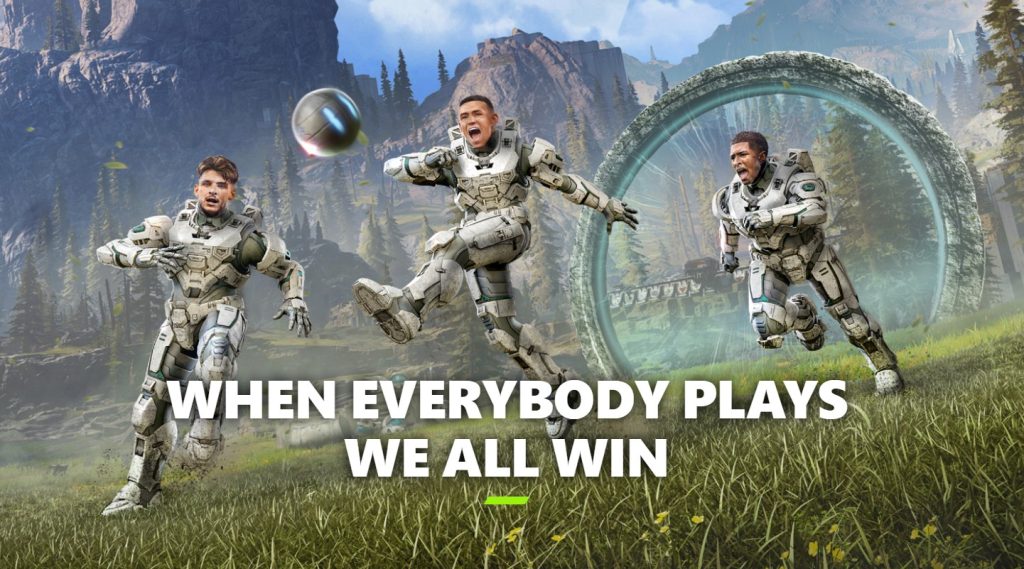
From Xbox.com
Joe also discussed Sumo Sheffield’s approach to accessibility in one of its most popular titles to date, the multi-award-winning Sackboy: A Big Adventure.
“We tried to target several features across a range of disabilities to help as many players play as possible,” they said. “We opted for full control customization knowing that players have different needs and wants for customising their experience.
“This included options we specifically considered for players who may have non-standard setups and controllers e.g. stick swapping, separated axis swapping on joysticks, full button remapping, swapping taps versus holds.
“We offered a range of game assists to allow players to adjust the complexity of the controls and game – these included swapping Roll from tap to hold, swapping Grab from hold to toggle, hold to flutter (reduces the need to rapidly tap jump), infinite lives, and gyro control alternatives.
“The Action Almanac is a guide and reminder that details how to use each mechanic and movement feature in the game. Complex controls can sometimes be difficult to recall for any player but especially for those with impaired memory. It’s also benefited players returning after a long time away, players who didn’t initially understand the tutorials, and players who simply wanted to better understand the game.
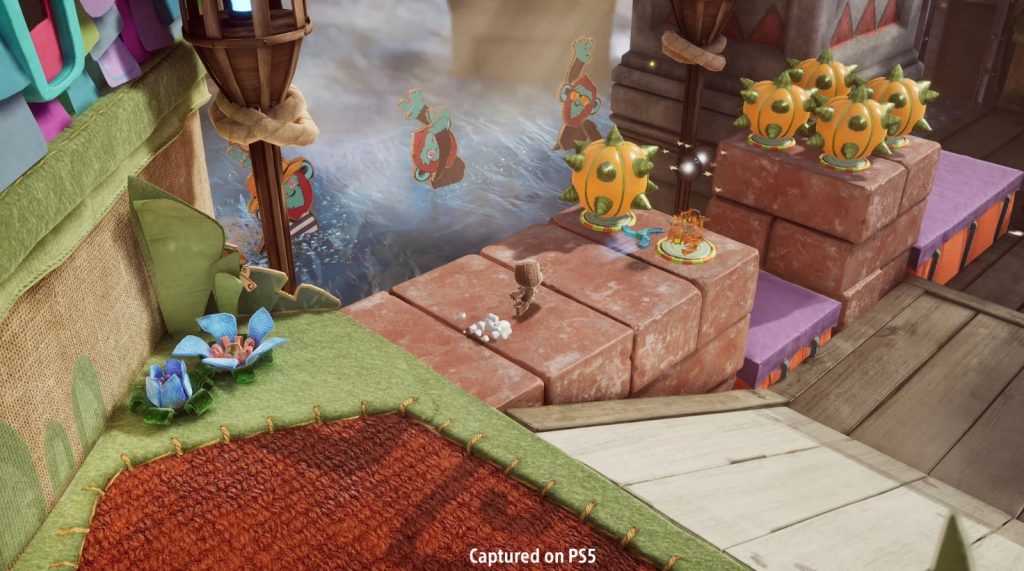
“We had a strong creative vision for the game, but we didn’t want this to come at the cost of players being able to participate and enjoy the game. So, we included an infinite lives toggle that lets players adjust the challenge of the game.
“Knowing that vibration can be critical for communicating gameplay information, but also provide a barrier to some players – we opted to allow players to fully scale the amount of vibration in the game rather than simply offering a toggle.
“Since we know no two players are the same, and playing together with other players can often cause barriers – we devised the ‘Assistance Copter’, pull out a flare, call for a helicopter to come and pick you up and it’ll whizz you off to the lead player, bringing you back together.”
“One example that has recently been floating around the internet is the ‘yellow ladder’ in Resident Evil 4. Let me tell you about how amazing that is even though most of the Twitter [X] community thinks that it’s a joke” says Smith.
“Firstly, Resident Evil is such an immersive game that sometimes you are not sure what you can and can’t interact with, so having it highlighted in an opposing colour is key of a lot of players with accessibility needs.
“I am one of those. If the barrels and ladders aren’t indicated, I tend to get distracted or not notice them. It is a cognitive issue that happens in multiple games and having clear cut indicators helps.”
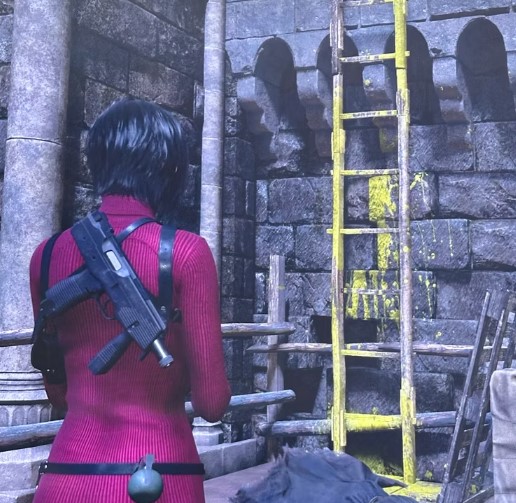
Jacek Szydłowski, Senior Software Engineer at PixelAnt Games, has also previously delivered a talk on accessibility, sharing four key focal points to make your games more accessible to players.
“Step one is to plan for accessibility,” said Jacek. “To have a good plan is building knowledge among your team, that the game needs to be accessible. It’s not something that can be added on at the end of the project; this is a fundamental part of the game, like visuals, audio, or gameplay.
“If you plan it from the beginning, people will make good choices. When the concept artists draw something, they know that they need to think about colours being visible properly and about contrast.
“Basically, be sure that your team knows that this is a fundamental part of the game. Accessibility needs to be the foundation of the game, as it’s way easier if you work on it from the beginning.
“Step two, give players a choice. Have all the necessary accessibility features in one place so the user will know where to find it. What’s more, the user should be able to preview what each setting does.
“If you have subtitles in the game, the user should be able to change the font size – e.g allowing players to change the default font to the free font called OpenDyslexic, a font designed to be easy to read for people with dyslexia, or Comic Sans – one of the best fonts for dyslexic people.
“Audio descriptions allows someone that cannot hear, to not only see what people are saying, but also to read about the explosions, gun shots etc.
“In competitive games, if someone is not able to communicate via voice or is not able to listen, you can provide the option to quickly communicate with other players via in-game quick chats, without the use of a microphone at all.
“Input remapping is very important as both current generation consoles have the possibility to globally remap the controls, but it’s the last resort. You should have that possibility implemented in your game, since not every player is able to play on the keyboard or on the controller in the same way.
“Another thing that you could add as an option is something that, for example, is an assist mode. If the game is too hard for someone or they are not able to physically do some things in this game, you can for example change the game speed.
“Step three, playtest your game. By playing our game, we will not only find bugs and other problems, but also barriers. This is the most important topic with regards to accessibility: if you don’t find barriers, your players will.
“Step four, ask and listen. Even if you ensure all the above steps, you might still miss something. Asking for feedback and listening to people talking about the game are the easiest ways to learn what you can change.
“For example, Bethesda added the ability to change the colours in Deathloop only after the release. It’s never too late to make your game better – Quake, also released by Bethesda, was updated 26 years after the release; just a while ago they added accessibility features.”
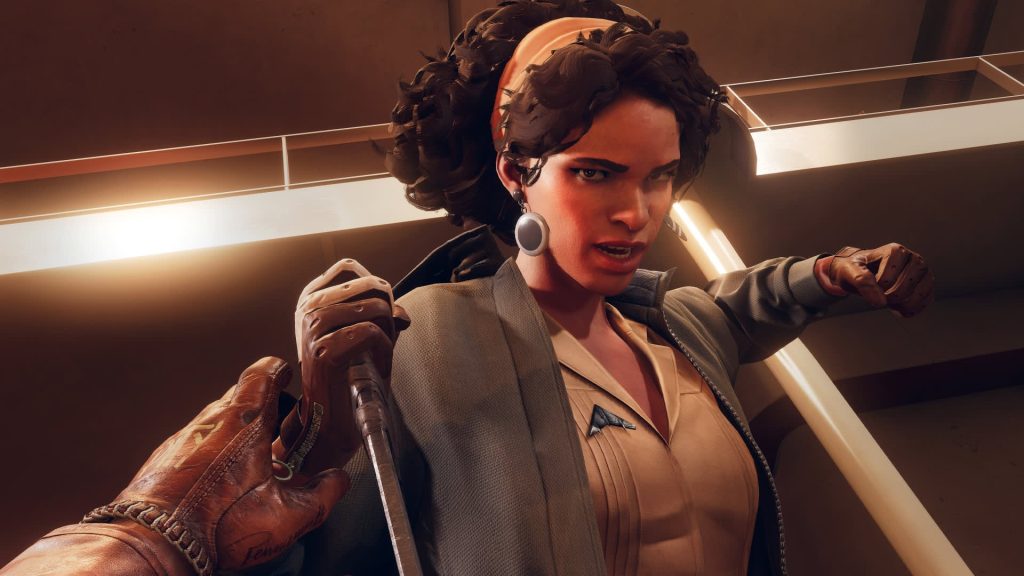
“It’s difficult as there are so many key parts to this,” says Ladell. “But I would break it down into three parts. First are the controller settings – do you let multiple controllers play you game and are your keys re-bindable? These are massive in terms of accessibility for players to be able to gain access to the game. I believe all games should have re-bindable keys, but I also know it is not always possible.
Secondly, do you have colourblind mode? How are you appealing to players who have vision impairment? This can go down a whole range of ways in which we can lower the barriers for players with vision issues but if you can at least include colourblind mode, that is a great start.
And thirdly, what languages are you offering, and do you also do the captions/text in those spoken languages?”
To summarise, Schall says…
“There are two strategies: one is to use the excellent resources made available by SpecialEffect. There is a ton of information and good work in place there to advise and guide.
“Secondly, think about what barriers could stop someone playing your game: vision, sound, neurodiversity, complexity, triggers, difficulty, dexterity of controller operation and many more. Then try and offer solutions that remove the barriers or offer solutions for players to enjoy the experience you are creating.”
There’s still a long way to go to make games more accessible to players but taking one small step at a time up that yellow ladder, Sumo and many other developers in the industry are making the necessary steps to a better, more practical future for all gamers.
Written by Sam Hamilton-Jones, PR & Communications Manager.
Skills utilised:
News
Empathetic Signposting
For a lot of people, it can be easy to freeze up and not know what to say if someone admits they are struggling.
How do you fix it? Is it your job to? Where does your responsibility lie?
Let me present a hypothetical situation, but one that has happened many times to people across the internet: a stranger messages you on social media wanting to talk about their personal struggles. There is no consent to discussing a potentially triggering topic. The person is distressed, looking for support, and is crying out for help.
Without knowing anything about this person – and without warning – you are now in a position that may feel uncomfortable, distressing, or confusing. It can be hard to know what to do when put on the spot, so I want to share some examples of things you can do to respond to others in crisis empathetically, while maintaining healthy boundaries.

Community Managers and Content Creators
One huge issue we see frequently with content creators and Community Managers is something called ‘parasocial relationships’. These are one-sided relationships, for example how a fan may feel about a celebrity; the fan may admire the celebrity and expend energy on pursuing their interest in this person, when the celebrity may not even know they exist.
We see online personas on our screens all the time, and it can feel like you know these people on a personal level. It can cause you to feel an emotional attachment that is not reciprocated. While that’s a whole other topic of discussion, it can also be a driving factor when we see creators and CMs exposed to trauma that they did not consent to.
Creators, Community Managers: you do not need to be anybody’s therapist. It’s not your job, it’s not your responsibility, and it’s walking a moral tightrope. But there are ways you can navigate these interactions to help the person feel supported whilst keeping yourself safe.
What should you do?
Let’s start off with one simple truth – there is no magic solution to this scenario.
It is absolutely valid to feel confused, frustrated or even angry if someone you do not know approaches you and shares traumatic events in their life, unprompted. However, I think is important to recognise the pain and struggle that person must be feeling in order to have done that in the first place.
While trauma dumping can be unfair and even harmful to the recipient, it’s important to try to redirect the person experiencing that trauma to resources that are equipped to support them in ways you cannot.
It’s not just this scenario that can leave someone feeling unsure of how to respond – so let’s discuss some practical steps you can take to support someone.
Signpost – one of the main ways to responsibly support someone who is struggling with their mental health is to point them in the direction of help. We have a wealth of resources on our Find Help page, as well as information and support on mental health terms and conditions. If you’re a streamer, consider setting up live commands in your chat to signpost to these resources, so they are accessible at all times.
Provide guidance, not advice – even if you are a Mental Health First Aider, it does not mean you are qualified to give advice. Information and encouragement are a great way to let vulnerable people know where they can find help, as well as setting that precedent that you might not be the person to provide it.
Boundary-setting This can include clarity on how to (or how not to) get in touch, or establishing clear rules on communication between yourself and your community.
Training – by learning more about mental health, you can become a more knowledgeable ally. Taking part in training such as becoming a Mental Health First Aider, or learning basic mental health awareness, can equip you with valuable skills to support others in times of need. Safe In Our World regularly runs free, global training, so keep an eye out for those opportunities and book onto them when you can. You can also find more information and training on our YouTube channel.
Non-judgmental listening – if you’re talking to someone about their mental health, whether it be a friend or a colleague, non-judgmental listening can create a safe space for the other person to feel heard and supported. Do not underestimate the power of simply being heard.

One of the main learning points I took away from the Mental Health First Aid course I took was that you can only do what you can do.
What I mean by that is that you can do everything in your power to help provide people struggling with resources and direction, but you cannot force someone to seek support if they do not want to. It means you can try your best to provide a listening ear, or to point people in the right direction, but don’t punish yourself if it doesn’t work in the way you want it to.
Creating spaces where mental health is not stigmatised and where people feel able to be authentic and more vulnerable with each other can promote a culture in which asking for help is not something to be ashamed of. If you’re reading this, and perhaps you’re not sure – it is okay to ask for support.
Written by Rosie, Content & Community Manager
Skills utilised:
News
Safe In Our World Charity Bundle 2024 Sold Out, Raising $200,000
Our Charity Bundle for 2024 has officially sold out, raising $200,000 for Safe In Our World!
Partnering again with our friends at Fanatical, this years bundle has been the most successful bundle we have ever hosted, with 26 incredible games from 17 developers and publishers.
We want to thank everyone who supported the charity, including those of you that bought the bundle, shared it with your communities, and especially to our partners who made this possible.

Thank you to our Partners
Atari & Llamasoft Ltd, Adamvision Studios, SneakyBox, Graphite Lab, Stuffed Wombat & Heavy Horse Games
Wired Productions & Nosebleed Interactive & LKA Games
Whitethorn Games & Peachy Keen Games
Green Man Gaming & Pewter Games Studios
Outright Games & 3dClouds, Petoons Studio & Torus Games
Tequila Works
Skybound Games & Serenity Forge
Tate Multimedia
PQube & Twin Hearts
Failbetter Games
Camel 101
Thunderful Games & Studio Fizbin & Assemble Entertainment
Private Division & Take-Two & Roll7
Landfall Games
Slitherine & Sleepy Sentry, K-Project & Black Lab Games
Poncle
Secret Mode & Sumo Digital Academy
and to Fanatical for continuing to support Safe In Our World year upon year.
Our work is made possible because of the many wonderful people supporting us behind the scenes – we’re incredibly grateful to those championing our message and mission every day in this industry.
Here’s to another year of making a difference and creating a safer space for all within games and the games industry.
Skills utilised:
News
Run the London Marathon MyWay for Safe In Our World
We have a limited number of free spaces on the TCS London Marathon MyWay for Safe In Our World fundraisers!
This is your chance to complete 26.2 miles however and wherever you wish on Marathon Day, whilst supporting Safe In Our World.
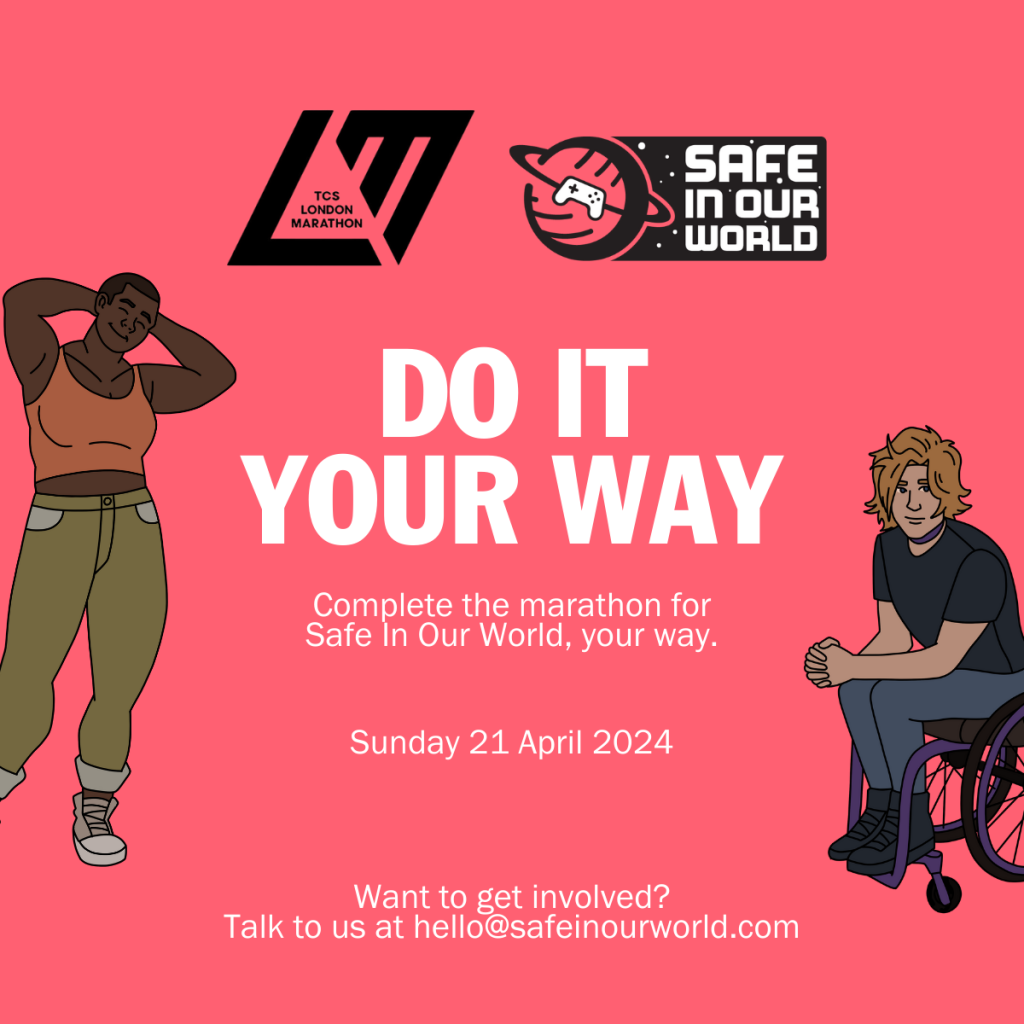
What is the London Marathon MyWay?
Whether you want to amble along country lanes or power up and over hills, the TCS London Marathon MyWay is your chance to complete 26.2 miles however and wherever you wish on Marathon Day.
Essentially, the London Marathon MyWay is a flexible way to participate in the London Marathon, regardless of where you are in the world. That includes additional options for those have religious restrictions or disabilities that may require more time or a different day to complete the 26.2 miles.
We’re thrilled to have secured places for the Safe In Our World community to get involved in this year’s marathon, and support the charity by setting up a fundraiser as part of the event.
Get your place
Interested? Drop us an email to enquire about a place for the 2024 TCS London Marathon MyWay.
We have a limited number of spaces for both UK and international participants, so please enquire ASAP if you’re interested in getting involved to avoid disappointment.
(Places already secured, no cost associated)
Skills utilised:
News
Toxic commentary is nothing but hurtful – remember there’s always a person on the receiving end
Don’t read the comments, they say.
For writers online, I get it. Comments sections can be horrible places, especially when someone disagrees with your point of view. I’m a white, straight male pushing 38 years old and have faced some terrible replies from disgruntled readers with differing opinions over the years – I cannot imagine what it’s like for people who belong to minorites or marginalised groups facing the ire of some of the internet’s least rational people. Still, I can’t help myself.
I’ve been writing online for over a decade now, and, having done so in the video games, entertainment and sports industries, I’ve learned that specialist writing regularly brings out the worst in specialist readers. I adore video games, and I like to think the majority of people who read my words do too. Whether they agree with my opinions or not is a different matter, but the silent majority invariably read my stuff, keep their opinions to themselves (or at least refrain from directing that at me), and move on. Don’t get me wrong, I love a debate, even a heated one, but only if there’s respect on both sides. I have zero time for abusive messaging.
For the folk who post negative comments, the process is similar. They type out something negative, hurtful and/or toxic, hit send, then get on with their lives, rarely thinking about the impact those words can and do have on the receiving end. So why do I personally insist on reading the comments? Quite simply to remind those sharing unreasonably negative sentiments that, yes, there is a human being on the other end.
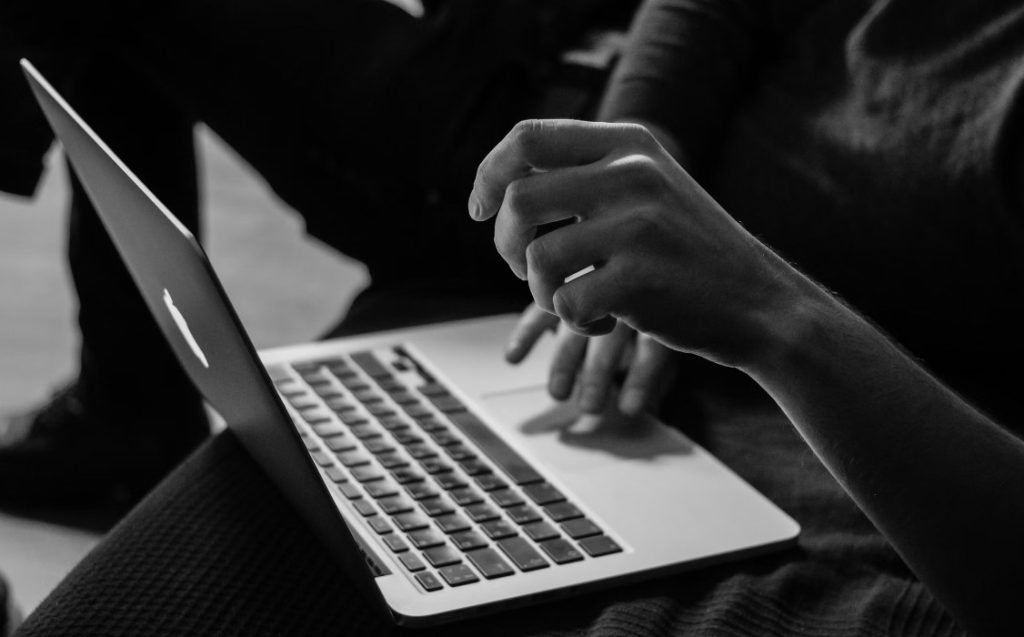
“Go kill yourself” was one particularly unsavoury reply I received many years ago, after one reader took issue with a fairly innocuous opinion piece I’d written about Grand Theft Auto Online. Again, far heavier vitriol has been directed at some of my peers in games media over the years, but as someone who once lost a close relative to suicide, I’m especially sensitive to this sort of hateful language. Again, one thing I’ve learned about comments of this nature is that the person making them rarely appreciates the impact of their words, and that if you decide to engage, more often than not – in my experience, at least – they retreat into themselves.
“It’s totally fine that you don’t agree with my opinion,” I replied, “but why did you feel the need to say something so horrible?”
“It’s nothing personal,” the commenter replied. “It’s just a turn of phrase”.
Again, the older I get, the less in-tune with every example of topical internet slang. Telling someone to kill themselves will never be okay, but even putting the crudeness and ignorance of the above to one side, what I found fascinating was the commenter’s willingness to engage on a human level after being challenged – something absent from the initial exchange prior to my reply.
It goes without saying that toxicity can manifest in myriad ways in online spaces, but when it’s as direct and blatant as this, I always do whatever I can to address it. Sure, it’d be easier to never read the comments, or even to read them and stay silent, but that would also let something so thoughtless go unchallenged. In this instance, I like to think that having engaged this person on a human level, they might stop and think about how language and words matter, and that they might refrain from doing something similar to someone else down the line.
I’ve had many similar instances like this one over the years, and, almost always, engaging people eye-to-eye helps to de-escalate the exchange. Which is great on one level, but the easiest solution long-term, surely, is for needlessly negative commenters to think twice before they spew hurtful vitriol at all.
Don’t get me wrong, I’m more than aware that part of my job as a writer is to be held to account, and I welcome all forms of feedback, negative included. But, like, just don’t be a dick, yeah? And so, to the toxic commentators out there, let me assure you: your online spaces will thrive when you bite your tongue – and who knows, maybe you’ll spot someone else stepping out of line in future, and can pass this message forward.
In the meantime, everyone should play Kind Words, share the love, and read through its Overwhelmingly Positive reviews on Steam. Now that is how a comments section is done.

Joe Donnelly
Joe Donnelly is a Glaswegian writer, video games enthusiast and mental health advocate. He has written about both subjects for The Guardian, VICE, his narrative non-fiction book Checkpoint, and believes the interactive nature of games makes them uniquely placed to educate and inform.
Skills utilised:
News
What We Take With Us
What We Take With Us is a guided meditation and set of activities comprised of 10 questions to aid anxiety and assist your workday.
The interactive webpage was created just after the height of the COVID-19 pandemic, as a means of supporting people through the darker days. We spoke to creator Adam Jerrett, Lecturer from the University of Portsmouth, on the creation of What We Take With Us.
“I’d had a really tough time, as a lot of people did, and I have always been quite scared of therapy, even as the process has previously been beneficial to me.” Adam explained, “I wanted to create something that would have helped me through those dark days – to almost reach out to myself from two years prior and let them know I’d made it to the other side, and I hoped that could help other people, too. Even though I made it during the pandemic, I wanted to make something universal, which is why the game’s questions are hopefully always applicable.”
The activities
The activities deliberately aren’t too demanding, but you do need a couple of things to get started with the activity:
- something to write with
- somewhere to write
- somewhere to sit
- something to record your voice
- a playlist of your favourite music
There are 10 tasks in total in the exercise, and they range from tidying up your workspace and some mindful reflection, to actively reaching out to others to listen and sharing stories in thoughtful ways.
You can complete these tasks online here.
More than an online space…
In January 2023, Adam wanted to look at how they could transform the What We Take With Us to a new level, and subsequently set up a physical space in Portsmouth called ‘Ana’s Office’. The space existed for 5 months following its initial launch in January.
Ana’s office was a physical location we set up here in Portsmouth to allow players to play What We Take With Us in a defined physical space. I specifically wanted to design it as a real calm and comforting space, but also as a space that belonged to someone. That someone was Ana Kirlitz, a character I created to tell additional stories through the lens of the game. Because WWTWU is quite a personal journey for players, I wanted to tell my own story of the pandemic through Ana’s character and her office.
“This then also manifested in an online alternate reality game where Ana had created a fan-made Discord server for the game, which I used as a hub to bring players into the game to hopefully build a community around it. On it, you’ll see the community we built, as well as snippets of Ana’s story. That story was extended in her physical office, which was this interesting hybrid between a “calm space” and an “escape room” type of framing.”
Group Learning & Support
We were curious as to how Adam would suggest co-opting the premise of What We Take With Us for group learning and support in larger settings.
“[The game] makes a great tool for group learning and support. One of the pillars of its design is “community”, so whilst WWTWU is played alone, it’s encouraged that players build communities so they can talk to others about their experiences,” Adam explained, highlighting the power of community within both solo and shared experience together.
“This can be done by setting up communities on things like Discord, like we did for Ana and her story, or through other things like forums, group chats, or even workshops.”
Adam also has previously held (and plans to hold more in the future!) a number of workshops to introduce people to the concept of What We Take With Us and provide a safe space for people to experience it. Get in touch with Adam here to learn more.
Skills utilised:
Games & apps, News
Safe In Our World Charity Bundle 2024
Our Safe In Our World charity bundle for 2024 is now live!
We’re thrilled to release our largest ever charity bundle in partnership with Fanatical, with all proceeds supporting Safe In Our World’s mission in mental health.
Buy the bundle here
Our charity bundle for 2024 promises a fantastic selection of incredible PC games, including numerous award-winning titles, with 26 games up for grabs. The bundle is available to purchase now on Fanatical for a minimum $15/£15/€15 for over $450 worth of fantastic games, with the option to donate more to Safe In Our World. All proceeds from this charity bundle will directly support Safe In Our World’s future initiatives in mental health.
Currently working with 160+ Level Up Partners offering free consultation and support, and having provided over $250,000 worth of free training to the industry and wider gaming community, Safe In Our World is committed to continuing to invest and support the games industry and everyone who works within it.
“The generosity of the games industry for our annual bundle continues to amaze us. We couldn’t do the fantastic work that we do without their support,” Sarah Sorrell, Charity Director at Safe In Our World says. “The charity bundle continues to grow year on year, and we’re so proud to be at its helm!”
“We are super excited to support Safe In Our World with their 4th annual charity games bundle launch” stated Alan Wild, Head of Business Development at Fanatical. “Championing mental health awareness is crucial, and the gaming world is a powerful medium for driving understanding of mental health conditions and openness in how we approach the topic. We’re in a great position to nurture positive environments, promoting inclusion, community and friendship, ensuring a space where everyone can feel recognised and valued.”
With last year’s charity gaming bundle selling out after just 24 hours and raising almost $100,000 for charity, players might have to be quick to secure this year’s fantastic line-up, which is detailed below.
Safe In Our World Charity Bundle Content List
Our fantastic line up of PC games for the Safe In Our World comes from an equally fantastic list of Partners. We are so grateful for their support in making this happen.
Akka Arrh (Llamasoft Ltd / Atari)
Arcade Paradise (Nosebleed Interactive / Wired Productions)
Breakout: Recharged (Adamvision Studios / SneakyBox / Atari)
Calico (Peachy Keen Games / Whitethorn Games)
Caverns of Mars: Recharged (SneakyBox / Atari)
Centipede: Recharged (Adamvision Studios / SneakyBox / Atari)
Filthy Animals | Heist Simulator (Pewter Games Studios / Green Man Gaming)
Giganotosaurus: Dino Kart (3dClouds / Outright Games)
GYLT (Tequila Works)
Homestead Arcana (Serenity Forge / Skybound Games)
Kao the Kangaroo: Re-release 2000 (Tate Multimedia)
Kitaria Fables (Twin Hearts / PQube)
Mask of the Rose (Failbetter Games)
Mechs & Mercs (Camel 101)
Minute of Islands (Studio Fizbin / Assemble Entertainment / Thunderful Games)
Mr. Run and Jump (Graphite Lab / Heavy Horse Games / Atari)
My Friend Peppa Pig (Petoons Studio / Outright Games)
OlliOlli World (Roll7 / Take Two Interactive / Private Division)
Paw Patrol: On a Roll! (Torus Games / Outright Games)
qomp (Stuffed Wombat / Atari)
Say No! More (Studio Fizbin / Thunderful Games)
Stick Fight (Landfall Games)
Stirring Abyss (Sleepy Sentry / K-Project / Slitherine)
Vampire Survivors (Poncle)
Warhammer 40,000: Battlesector (Black Lab Games / Slitherine)
Zool Re-Dimensioned (Sumo Digital Academy / Secret Mode)
Buy the bundle here
Skills utilised:
News
Charity Bundle Launching February 5th 2024
We’re delighted to announce that the Safe In Our World charity bundle will return on February 5th 2024.
This will be the largest ever games bundle from Safe In Our World and Fanatical so far, following the success of 2023’s charity bundle which sold out in just 24 hours. The full line up of partners and games will not be revealed until the bundle is available, but we promise you, it’ll be worth the wait!

As always, the bundle will be available to purchase with the option to donate more to Safe In Our World. All profits from the Safe In Our World Charity Bundle 2024 will directly support Safe In Our World’s future initiatives in mental health.
Mark those calendars for Monday 5th February at 15:00 GMT (07:00 PT, 10:00 ET) and support mental health awareness in the video games industry.
We’d like to use this space to thank all of the incredible partners we’re working with who made this upcoming bundle possible. The generosity and support provided by our bundle partners continues to amaze us. Thank you for supporting our important work in this industry.
Want to learn more about our mission at Safe In Our World? Click here to read about our ambitions, goals and ethos.
Skills utilised:
News
How can video games affect our body image?
Looking at how popular media and culture ties in with our self-image is not a new phenomenon. In fact, we are constantly seeing this complex ideology grow and change as we learn more about the impact of things like the internet and online spaces on our headspace.
We hear many voices raising issues about the negative effect that popular media and culture can have on our own perception of self-worth, diving into unrealistic or narrow expectations of how we should look, dress and speak. Conversely, we’ve seen the power that authentic and diverse representation can have on instilling feelings of belonging and community. But how do video games fit into this?
By focusing on a more interactive form of entertainment, one could argue there is a greater sense of self when we bring ourselves into the stories we love. We asked our community how games have affected or changed their own body image; to better understand the common themes of how these two things interact.
Representation of Diverse Bodies in Gaming
One of the common themes in our community’s answers revolved around the representation of a variety of body shapes and sizes in games.
“Being that I’m a Black, plus-sized, cosplayer, I often get so thrilled to see a Black femme in a game, but kind of saddened when she is bone thin. As someone with natural curves all over, it can get pretty depressing when you want to accurately portray that video game character. It usually leads to me saying, “Yeah, I’m gonna do it,” but then realizing, not anytime soon.” – Tierra E
Tine Schenck shares her thoughts on the often lack of different body types in games, as well as the stereotypes for certain character roles; “I don’t have an hourglass figure, I have some wrinkles, and no one would base a leather bikini-clad character on my body. They might consider me for a robed wise woman, sure. But for all intents and purposes, my body would not be considered ideal in a game made by men.” This has led me to just not play these games, and largely missing out on some excellent games. Especially coupled with the fact that female characters also often fall into stereotypes of 1) fatally attractive or 2) healer/sage/wise woman, so I generally don’t see myself and my body and multilayered mind in any of these characters. To be frank, they are part of the reason I don’t wear a bikini.”
It’s worth highlighting that it’s not just the literal representation of a diverse group of people’s bodies that’s important, but the way in which they are portrayed.
An anonymous contributor dived further into this: “Games tend to largely feature conventionally attractive women, which instills this feeling that people are only invested in the stories of attractive women. Games also tend to use fat characters for comedic effect, take Bob in Tekken or Wedge in FF7 – there must be in-jokes that mention their weight – fat bodies are something to be laughed at, and if you are fat you’d better be in on the joke or you’re not cool. It may be that this is echoing real life, rather than influencing it, but it is certainly reinforcing it.”

Capcom Official Artwork – Street Fighter IV – Rufus
Sexualisation of Characters
A content analysis study from 2016 (Lynch et al) which looked at female characters in gaming over 31 years found that despite an increased number of games featuring playable female characters, games still depicted them more often in secondary roles and sexualized them more than the main protagonist.

They also found a positive relationship between the sexualization of characters and their physical capability, raising concerns about how ‘traditionally attractive’ characters are often treated as superior.
Jane discusses this further, “I remember as a teenager struggling to find games that weren’t hyper sexualized. I’m in my 30s, for reference. One of my favourite games at the time was fighting games. Soulcalibur, for example, was a struggle. I would have to unlock outfits so I could play the characters I liked without feeling uncomfortable.”
This is not just limited to female characters of course, as Olee points out: “Games present all these visually striking body image ideals and fantasies. You’ll often spend hours with a camera following the perfectly toned buttocks of your chiseled player character while you play. The majority of male protagonist body types are either a lithe toothpick with insanely thick hair and perfect smile, or a muscular Adonis complete with a perfectly trimmed beard.”
“When you’re under constant bombardment across titles and genres of this kind of thing, it definitely can bring to light insecurities about your appearance – these beauty standards are so (on the whole) consistent, and if I don’t look like that, am I failing somehow?”
Em Aspinall, a Class of 2024 Ambassador explains their own experiences during their teenage years, “Most of the students I socialized with were boys with an interest in video games – it was one of the few things I could find in common with kids my age. Puberty was a difficult time, and I was made to feel embarrassed by boys making inappropriate comments about how my body was changing – calling me “polygon tits” or “Lara Croft”.”
“It didn’t take me long to start wearing bras in an attempt to change how my body was being perceived by those boys. While playing video games didn’t have a direct impact on how I saw my own body, often those same video games were causing an indirect impact, and a lot of social discomfort, that lead to me paying much more attention to my body than I would have otherwise.”
Character Customization
A game that has evolved over the last 20+ years in looking at more authentic representation of a variety of body shapes and sizes, has been The Sims. With the additions of custom pronouns, medical wearables and binders, trans inclusive scars, and additional creators such as Ebonix who worked with the Sims to create more skin tones, afro hair and nails, there are so many more options in creating characters than in it’s predecessors.

That’s not to say that the game is perfect – there are still issues which could be amended in future updates, such as the way that clothes fit different bodies. For example, if a masculine character wears feminine clothing, it doesn’t fit the body as you would expect, and many of the clothes warp strangely around fat characters instead of being appropriately sized. Even with size inclusivity, to be truly inclusive, it should be administered throughout multiple building blocks within the game.
Rosie Sheldon has also discussed how she uses games as a way to explore her own identity.
“As a trans woman, games helped me to virtually explore identity, presentation and self-expression through virtual realities. Having this freedom of self-expression and exploration helped me to understand how I see myself in real life and what I want for myself. It made me confront the sometimes blurred line between what I want for myself and what I’m attracted to, and question what that means for my identity. These virtual realities were an immensely important way of exploring who I am and who want to be. They gave me the freedom of aesthetic presentation that otherwise, if limited to real life, would have been suppressed, shaped and molded by others’ opinions. But in these worlds, I was me and no one could tell me otherwise.“
Emma Morris agrees, highlighting that “Playing an RPG with a body that doesn’t feel relatable can be uncomfortable. More recently games have included options for non-binary characters. It definitely reduces the secondary body dysmorphia.”
Motivation
One thing I haven’t yet touched on is the connection between physical activity and games – often tied to the harmful stereotype of gamers having *no other hobbies*. Richard Cuartero brought up an interesting point about how character movement in game inspired them to exercise more outside.
“The games I played a lot growing up are the Tekken series, Marvel Vs Capcom 2, Final Fantasy VIII, Mirror’s Edge, Ratchet and Clank, Crash Bandicoot 3, Jak 2, and Monster Hunter: World.”
“That being the case, games haven’t affected my relationship with my body image per se since the characters aren’t necessarily human. If anything I was inspired by the way my character was able to move which translated to me taking up more physical exercise outside of games which has built my current body image.”
Final Thoughts on Body Image & Games
It’s been eye-opening to see the various (positive and negative) effects that games, characters and customizable options can have on players. Depending on your own experience, the games you play and the choices you make may even have a difference on this perspective – for instance, if you struggle with gender dysphoria in games, you may gravitate towards games which prioritize customization in characters.
As body image within games is such a huge topic to cover, this acts as a broader lens into the relationship between body image and video games, which I hope allows readers to reflect upon further.
Resources
- Body Dysmorphic Disorder (BDD) – what is it and how can you seek support?
Written by Rosie Taylor
Skills utilised:
News
Games for Good: Sibel’s Journey & Exploring Our Identities
This month we chatted with Serenad from Berlin-based collective Food for Thought Media about their game Sibel’s Journey and overall ethos around educating and raising awareness for important topics.
Tell us a bit about Food for Thought Media…
We are a Berlin-based small indie studio and collective, founded in 2019 and since then we are developing computer games, media and cultural projects about LGBTQIA+, gender, identity, sexuality, public sphere, cultural heritage, accessibility, climate and environment using creative technologies. Our team comprises women, trans people, queers, migrants and mothers of teenagers, so we see diversity not as ornamental, but as a core part of their identities. We incorporate not only our professional know-how in our specialist areas, but also our personal experiences and different perspectives into every experience we create.
Sibel’s Journey is a narrative adventure game and a self-learning experience about gender, sexuality, bodies, and personal boundaries. What went into the decision to structure the game like this, and what are the benefits of self-learning in this context?
Initially, as a group of five women within the game industry, we united with the goal of using our expertise in different fields to create an inclusive educational game focused on gender, sexuality, identities, and healthy relationships. Our motivation stemmed from a shared belief in the inadequacy of education on these critical issues within digital media. Personally, I had a longstanding interest in gender, gender identities, and their intersection with computer games. And the others had experience in educational games for children. It appeared evident that we could play a role in addressing this gap by offering meaningful solutions.
As our team evolved, we welcomed additional members, including activists advocating these causes, academics deeply engaged in relevant studies and other passionate individuals who resonated with our project.
Utilising a video game as a platform for this educational tool brought several advantages. Firstly, the computer game, which is already a part of children’s and young people’s lives, was an advantageous and interesting medium because the content is communicated in a fun way throughout the game. Secondly, these topics are sensitive and new for many young people at that age. In early adolescence, especially learning about sexuality can be scary, and overwhelming and can often be perceived as something embarrassing. The fact that computer games can be played alone gave the possibility of privacy to the young people while exploring the topics and it left enough space to evaluate one’s own thoughts and feelings without shame or embarrassment.
The concepts of gender and sexuality are explored in Sibel’s Journey in a very fluid way (for example using sliders and scales to describe someone’s gender identity and expression): was this a conscious choice from the outset or did this method evolve as you developed the game?
The Gender Unicorn is a concept that already existed outside of the game. It is a visual tool designed to help individuals understand and explore the concepts of gender identity, gender expression, biological sex, and attraction. From the beginning, we knew we would like to somehow incorporate this into the game. Initially, we thought of using it in the form of a mini-game where players are asked to make guesses about the characters they encountered through the gameplay however after a little bit of thought we changed our minds about it and decided that our characters should be able to speak for themselves. As players proceed in the game and meet new characters, from the gender unicorn section they can see the characters’ choices and how they filled this information for themselves. Players can also choose to fill this section for themselves. As they fill the gender unicorn, affirmative comments on their decisions are taking place. But it is not mandatory to play this part to be able to finish the game. Using sliders and scales was a very conscious choice, we wanted to visually show that certain categories addressed on the gender unicorn such as gender identity, gender expression, or attraction are indeed categories of the spectrum and cannot be defined by multiple choice decisions.

Image from ‘https://sibelsjourney.com’
As well as LGBTQIA+ issues, Sibel’s Journey talks a lot about different facets of identity: body image, history, politics, language and culture. Why was this important for you to cover in the game?
From the very beginning, we wanted to follow an intersectional and comprehensive approach. We wanted to show that those topics are intertwined and do not exist in a bubble in society. The more we thought about it the more we wanted to add to the topics but eventually, we had to stop ourselves a little bit from not overwhelming children with a lot of information at once. Also, it would not be as effective as we wanted if we just briefly mentioned every topic but did not have time to properly dive into the discussions. That would create a danger of tokenism which we are all against. On the other hand, topics around body image, politics, language and culture are so closely connected that it is almost impossible to make a good quality game without addressing those issues in an inclusive gender and sexuality education game. Our character Sibel is already deeply affected by each of the mentioned issues in her everyday life, and it is the reality of human experience. Considering that we live in Berlin and the Turkish population here (well, I am Turkish as well), we thought that having the German daughter of a Turkish immigrant family as the main character would be remarkable in many ways, and it would raise awareness. Especially to fight stereotypes about migrant populations or Muslim populations’ attitudes about queer and feminist politics, we find it valuable for a character like Sibel to ask questions about intersectionality, immigration, guest labour, being Muslim and queer, and to analyse and understand the answers.
What’s next for Food for Thought Media?
We will continue what we do best, creating games and workshops for young people on diverse topics around inclusion and diversity. It is our job to give food for thought, you know 🙂 We previously did that on the topics of gender, sexuality, sexual orientations, bodies, boundaries and healthy communications with Sibel’s Journey. This time within the general framework of diversity and inclusion, we are moving our focus a little bit to other topics. Especially the ones that we wanted to address in depth in Sibel’s Journey and left out to not overcrowd the game. Our new game Leila’s Play (working title) is going to focus on the issues around disabilities, neuro- and physical diversities, accessibility, ableism, and diverse backgrounds of people while telling a coming-of-age story. Players are going to find themselves in a remote club in the suburb where a theatre festival is about to take place, and they will need to solve a series of puzzles and mysterious events while learning about the diversity of human experience. We aim for an entertaining game play by embedding the topics we cover into the puzzle and mystery elements to be solved by the player, using metaphors in places and giving the player even more freedom of movement. We are expecting to release it in mid-2024, so stay tuned!
Sibel’s journal can be played on iOS and Android. Learn more and find additional resources at https://sibelsjourney.com.
Check out Food for Thought Media and their other projects at https://foodforthoughtmedia.com.
Skills utilised:
News
Welcoming our Ambassador Class of 2024
We’re delighted to announce our new Ambassador Class of 2024, sponsored by Playground Games, who will be representing the charity in the next calendar year (and beyond!).
This year saw a phenomenal 220 applications, and just 30 places in the cohort: we were truly blown away by the quality of these applications and want to extend a huge thank you and congratulations to everyone who applied this year.
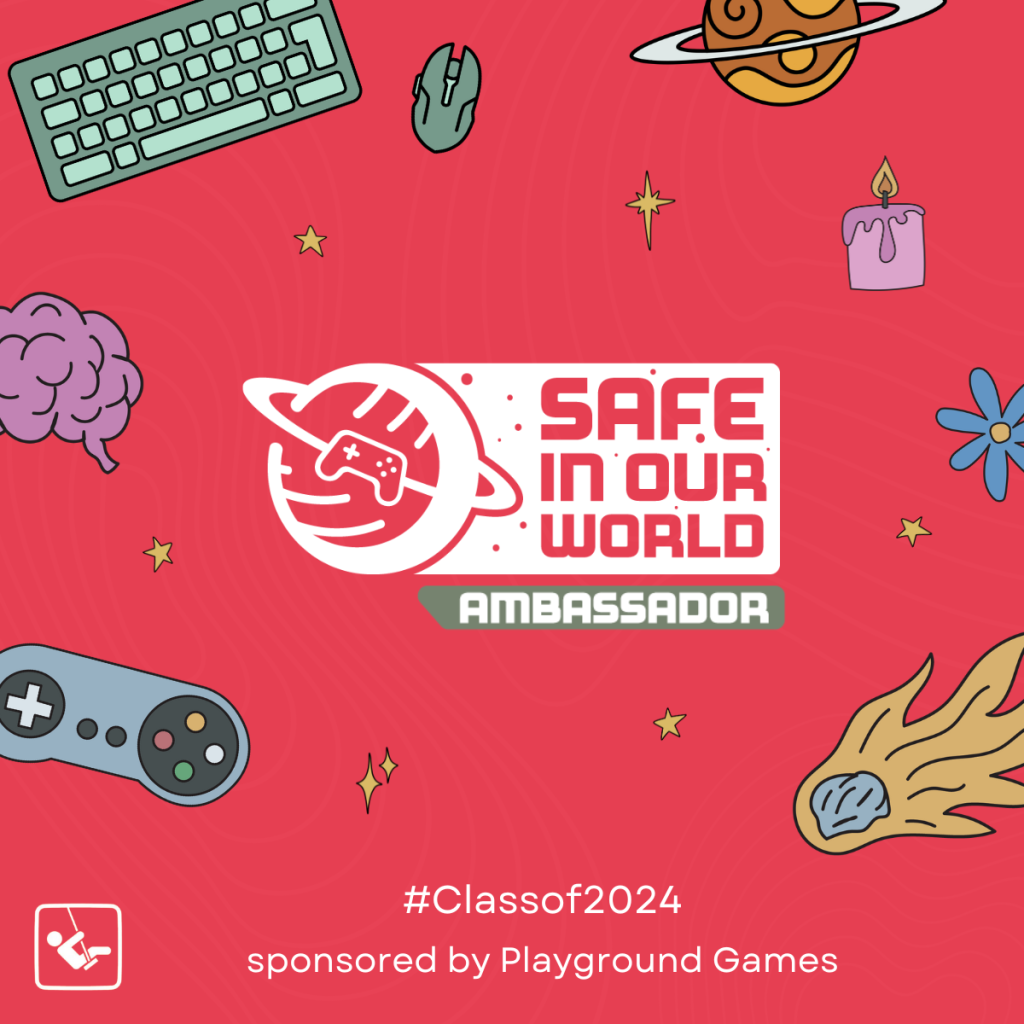
We’re absolutely thrilled with our selection for 2024, and can’t wait to see the ingenuity and passion that these 30 individuals have shared with us already. Please join us in celebrating the brand new cohort who will support Safe In Our World’s mission!
So without further ado, here is the new class of 2024:
MaizyMarzipan
Once again, a huge sincere thank you to every single person who submitted an application this year. This decision is never an easy one, and we’re so grateful for the sheer amount of passion that our applicants have for wanting to be a more involved part of Safe In Our World.
Skills utilised:
News
Seeking an Autism/ADHD Diagnosis and its effect on mental health
Recently we asked our community on their thoughts about the challenges and experiences associated with seeking a diagnosis for ADHD and/or Autism.
For those who don’t know, ADHD and Autism both fall under the spectrum of neurodiversity; a broad and debated term covering a huge range of brain functions, mental illness and how we interact with the world around us.
Over the past 3 years, we’ve seen a huge rise in the number of adults seeking diagnosis, with the ADHD Foundation reporting a 400% rise, and the UK’s NHS reporting autism referrals having trebled since 2019.
Amongst an array of other factors, this resurgence has had a huge impact on those currently seeking support, with extreme waiting lists on public health systems being reported.
The Challenges
Mags Donaldson mentions this as one of the biggest challenges in seeking a diagnosis, also mentioning that “I also felt a bit of a fraud – I was 38. If I was autistic, surely SOMEONE would have noticed by now? So I was worried about taking up the space of someone who ‘genuinely’ needed it. Despite being told by my psychotherapist to seek diagnosis.”
Chochy discusses their own challenges in seeking a diagnosis, highlighting the level of self-advocacy that they need to start the process.
Contrary to popular belief, doctors and mental health professionals in my experience often don’t see a reason to give a diagnosis. The result is a process where every step you have to fight to prove why you need one. I even had a doctor for one ask me why I would want to be labelled with a condition that might make MH professionals think worse of me.
Atari shares her own experience, highlighting that “the biggest challenge was actually starting the process. It ended up taking me many more years, until I was in my 30’s, to actually get on the waiting list for a diagnosis.”
The thing I was trying to get diagnosed for was one of the very same things that was keeping me from getting diagnosed. It was like a vicious circle.
Another side to this is looking at the concept of appearing ‘high functioning’ and how that can also have an impact on how you are treated. Kerry discusses this experience; “I have always been a high achiever, someone well-liked, and someone who could seemingly manage it all. So, when it came time to seek out mental health treatment, it was difficult to prove that I needed help. When I did receive help, it was easy for my care staff to dismiss me because I was “so self-aware”, because I am “high achieving”, and because I am “well adjusted”. I’m certain they believed me from what happens behind closed doors, but, it was difficult to see the impact in my day-to-day life until it got really bad.”
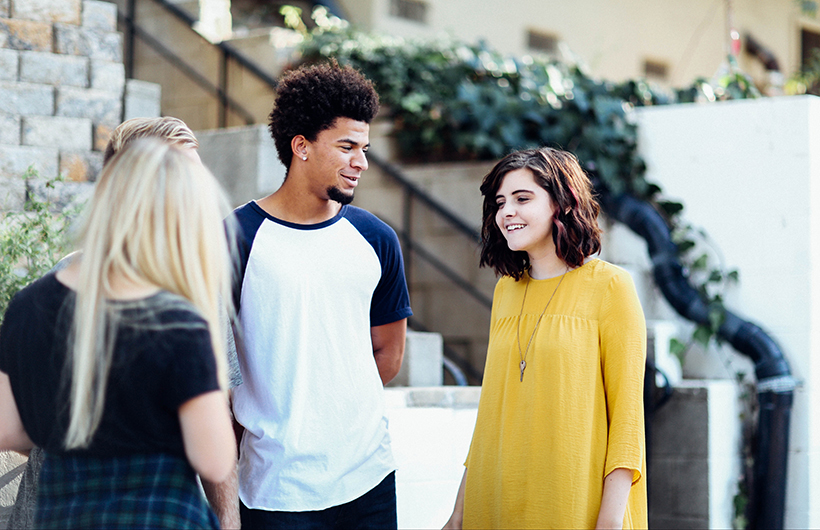
So, once you get that diagnosis, how does it feel?
Similar to our mental health diagnosis article, two of the top words mentioned here were ‘validating’ and ‘relief’.
Panne, who also discussed the lack of accessible and free resources available to those looking to get support, said that by far their biggest feeling upon receiving a diagnosis was validation. “I no longer felt that I needed to caveat my mental health in discussions by adding “I’m self-diagnosed” when I can now just say “I have ADHD.” I felt proud that someone else had seen in me what I’d known all along, but also disheartened that it took years of self-advocating for someone to even look.”
Atari found the process of being told about her diagnosis to be surprisingly emotional, “when the psychiatrist told me she would be diagnosing me with inattentive ADHD, I cried immediately. I apologised, and I was astounded when she explained to me that it was a normal reaction. Finally getting a diagnosis was the most relief I’ve felt in my entire life.”
What can we do?
Deciding whether or not to seek diagnosis is a completely personal choice, with many nuances affecting our decision making process. Here are some final thoughts from our contributors on what you can do to make that process a little bit easier.
Kerry shares her advice following her own journey; “Don’t give up. Come prepared with anecdotes. If it’s safe to do so, reach out to your family who can speak to how you were as a child. Take time to reflect to determine if receiving a diagnosis is right for you. Self-diagnosis is often valid, but a professional diagnosis can impact things legally, professionally, and else.”
“Don’t be afraid to access tools or resources without/or while waiting for an official diagnosis,” Panne adds, “your mental health and experiences are just as valid and if you find a coping mechanism or support system, then you deserve to utilise them. Once you have a diagnosis or are on a diagnosis pathway, share how you got there with everyone you know, they’ll need your knowledge.”
Lauran encourages others who might be unsure of whether to look for support, “Firstly, DO IT! Whether diagnosis leads to you getting medicated or therapy, knowing that you have a neurodiversity is half the battle. Once diagnosed you’ll be kinder to yourself for you ‘failures’ and you’ll be able to put things in place to help you cope with life/work/difficult situations.”
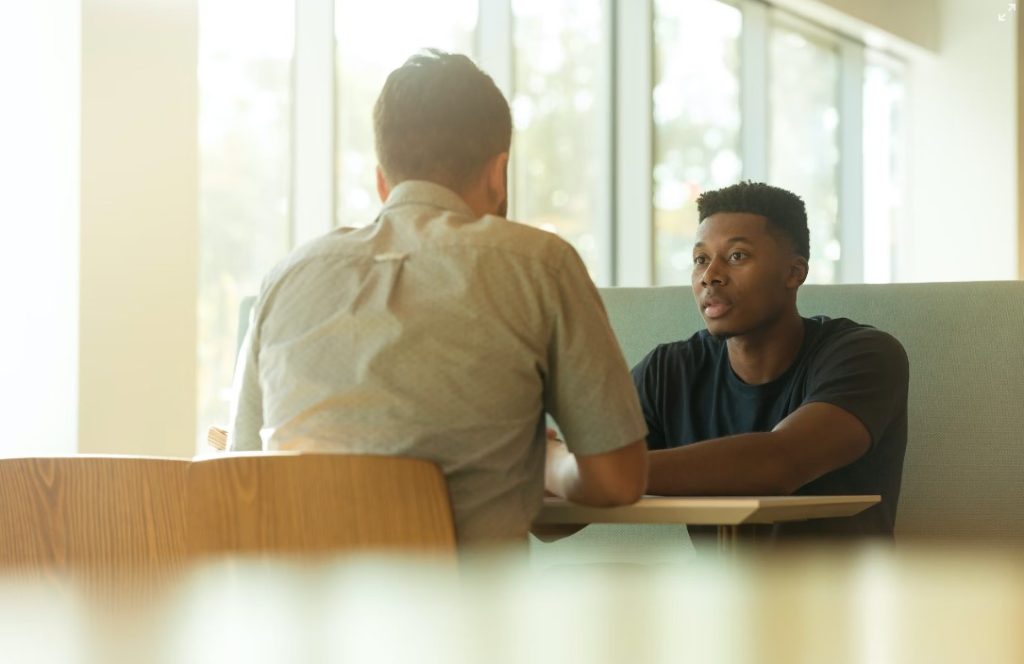
It’s important to recognise that not everyone’s journey will look the same when seeking support, whether it’s for ADHD or anxiety. “It’s gotten much better, but there is still a stigma when talking about mental health and being neurodivergent in the black community,” Atari explains, “in many cases you will have to be your own biggest advocate. No one can make you go into the diagnosis process, so you must do that for yourself! Think about how your symptoms have affected you throughout your life, and make sure to write down everything you would like to mention and/or talk about so that you can have an honest and open conversation that gets down to the root of what you’re going through.”
Resources on ADHD and Autism
Learn more about autism
Learn more about ADHD
Written by Rosie Taylor
Skills utilised:
News
PRISM: Creating safe spaces for our people
Guest post by Alif Trevethan, Inclusion and Belonging Manager at Sumo Group, one of our Level Up partners.
In 2021, Sumo Group launched its internal Inclusion and Belonging community, PRISM. What started as a small, ambitious group passionate about diversity in the games industry has evolved into a 350+ strong community safe space full of inspiring people dedicated to creating meaningful change.
PRISM is a space for underrepresented and/or marginalised people to find community, resources and connection, and be part of active change across all of Sumo’s studios. It is also a place where our marginalised people can find a safe space for meaningful discussion, transparency and kindness – which we need now more than ever.
In a world of constant hard headlines, political unrest and threats to marginalised people, PRISM is somewhere our people can find safety and solace in community.

PRISM hosts events and sessions throughout the year and creates opportunities to learn, experience and celebrate
What is PRISM?
PRISM is many things, but ultimately it helps Sumo foster an environment where everyone feels safe, welcome and represented.
PRISM houses four main community streams – CHROMATIC (Underrepresented Ethnicities), IRIDIAN (LGBTQ+), ULTRAVIOLET (Marginalised Genders) and WAVELENGTH (Ability & Wellbeing), and each has cultivated an incredible, engaged community. They’re able to openly discuss topics, ask questions or raise concerns in a safe and understanding environment, meet new people and find community.
These streams are accessible for anyone within Sumo to join regardless of if they are a member of that community – welcoming allies to these streams means our people have the opportunity to learn and contribute.
Both CHROMATIC (Underrepresented Ethnicities) and ULTRAVIOLET (Women & Marginalised Genders) also have closed channels for members of their communities who may want to keep particularly difficult and personal discussion.
Each of these streams have Diversity Champions acting as compass points for their community. These passionate and insightful change-makers carry the feedback and concerns of their communities to Sumo leadership, and are able to encourage, instigate and – if needed – mediate difficult conversations.

PRISM’s presence within Sumo is growing and this year, Diversity Champions from all streams spoke on panels and sessions on a range of topics at its company-wide internal learning conference, SDC
Creating safe spaces
The world is so heavy. Between never-ending news and scrolling social media, people have little to no respite… and this can be a lot of weight to carry around all day, every day.
PRISM helped me find myself and let me feel less alone as I find my place in games. – Ladell – a Diversity Champion for the Chromatic stream
We spend large chunks of our lives in working environments, and PRISM has created a community of people able to have honest and meaningful conversations, provide resources and advice, and provide solace to one another. It’s more important than ever to create safe and understanding spaces for people to talk freely, seek support and connect with peers who understand and empathise with their situation. It’s not to say that understanding and empathy is lacking elsewhere, but that not every conversation is right for every room. PRISM is full of actively engaged, likeminded people and creates a space for people to share openly, express concern and be validated in their feelings when the world is so full of grief and disruption.

PRISM is an amazing space for connection fuelled by generosity of spirit, genuine kindness and enthusiasm to share and grow together
Finding connection at work
In addition, PRISM is an amazing space for connection. It’s been so heartwarming to see just how our PRISM members support and help each other. It can be hard for people (especially underrepresented folks) to find peers going through similar experiences, and I’m so proud of the space we’ve created for people to not only find community, but also access a wealth of knowledge, expertise and experience. I’ve witnessed first-hand conversations in PRISM from folks looking to start the transition process but not knowing how to approach it at work, or people wanting to access a neurodiversity assessment but finding it overwhelming who have been met with so much love, support and useful, actionable steps and advice.
Education in community
With every conversation comes more learnings and as PRISM continues to grow, our amazing bank of resources does too! The possibility of education is always there, it’s always free and accessibility for everyone both on Teams and on our internal learning platform, and I cannot wait to see it continue to develop.
We are so lucky to have such an amazing bunch of people within PRISM, and their pure generosity of spirit and genuine love and support for the community makes me proud beyond belief.
“PRISM introduced me to other people like myself at a time when I needed that more than anything.” – Robyn – a Diversity Champion for the Iridian stream
Find our more about PRISMs journey here.
Skills utilised:
News
Code my Crown: Changing the Game for Black Hair in Video Games
We’re thrilled to see a brand new initiative from Dove and the open source afro hair library create ‘Code my Crown’ – a guide to the creation and celebration of Black hair textures and protective styles in video games.
The video games community has the power to create alternative realities whilst letting players feel seen and represented, but often options for Black hair are slim, with just 7% of hairstyles in the 4 top games in August 2023 offering textured or protective styles.
85% of Black gamers think video games poorly represent natural hair, as referenced in the video below, which adds to a lack of sense of belonging for many Black gamers in this space. We spoke to Atari, who discusses why the campaign is so important.
“On the day of the shoot, I was filmed getting my hair done by Nai’vasha, a celebrity hairstylist, while having a conversation with A.M. Darke, founder of the Open Source Afro Hair Library. We all talked about my experience in gaming, and the lack of accurate representation of Afro hair in video games. We looked at some examples in games that felt like our hair was just an afterthought, and we looked at some examples in games that felt our hair was done with as much effort as white characters in the same games.”
Atari goes on to explain the process of the shoot, “A.M. and Isaac, who was a Lead Developer on the campaign, made 3D modeled versions of myself, including my hairstyle! We weren’t allowed to see the process until it was done, and I really appreciated that because the surprise you see in the video from the 3 of us women is real!”
The campaign shows how it powerful it can be, and the impact it can have on gamers today. Atari agrees, saying that “This campaign is important to me because it brings awareness to a major representation problem we have in the gaming industry, but it also brings awareness to the solution! This is a free guide that devs can use to make their characters look like the people who play their games, and that is worth everything to me.”
The Dove guide offers instructions, personal insights, detailed references and full open-source code, created by people within the Black community, for anyone to use to create characters in the digital world.
We recently saw BAFTA host a masterclass talking about the spectrum of authentic Black hair and makeup representation in games, as well as in film and TV, which featured Safe In Our World Ambassador Jerreau discussing the need for more authentic representation.
Also featured on the panel was Patron of Safe In Our World Danielle Udogaranya, who is known for her incredible work in creating inclusive 3d modelled hair, clothes and accessories, working directly with The Sims on the addition of over 100 skintones and afro hair. She recently had her work shown in an exhibition in Italy.
A powerful article from Evan Narcisse, written back in February 2017, discusses the lack of diverse options within the character creation process, mentioning that “I can reproduce my thick lips or wide nose sometimes. A goatee? No problem. But when it comes to head hair—specifically locks that look like what grows from my scalp—I’m generally out of luck.” Narcisse then went on to be a design consultant for Marvel’s Spider-Man: Miles Morales.
We want to highlight these fantastic resources in the hopes of more inclusive hair options being implemented in games, providing free resources to game devs so they can truly level up Black hair.
Written by Rosie Taylor
Skills utilised:
News
